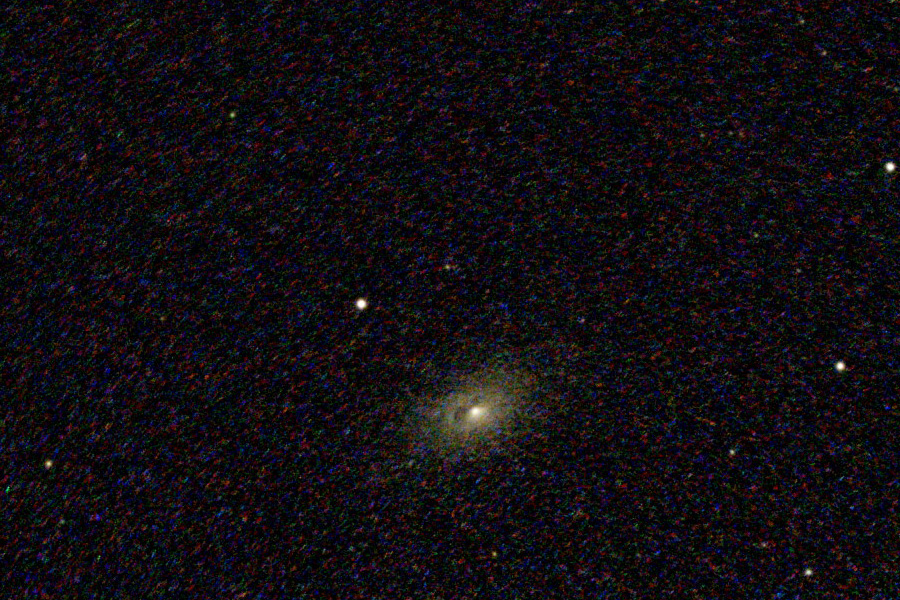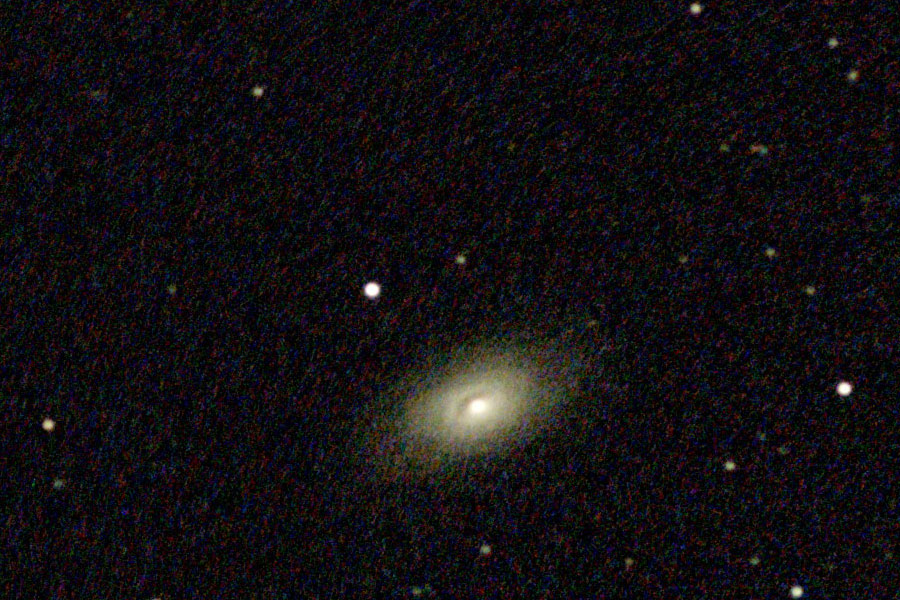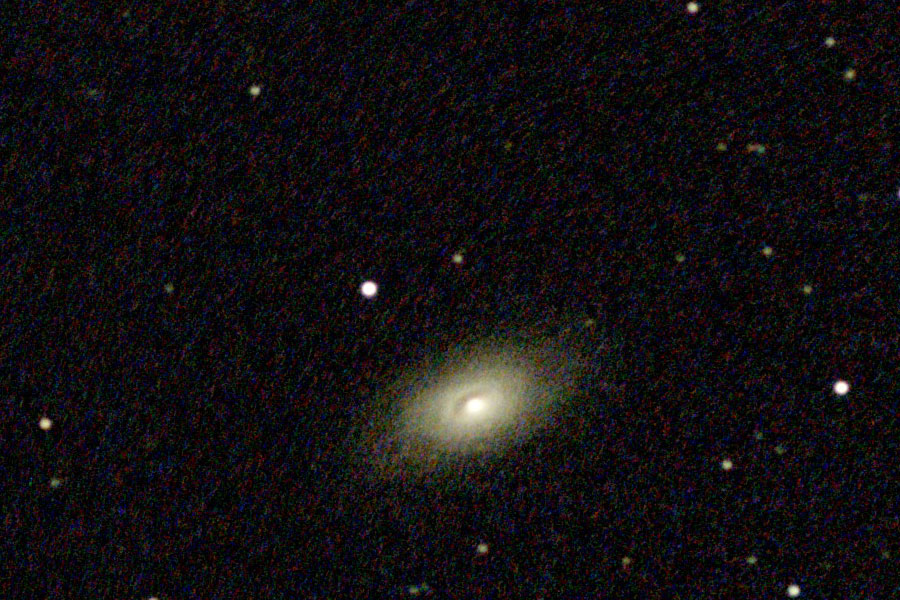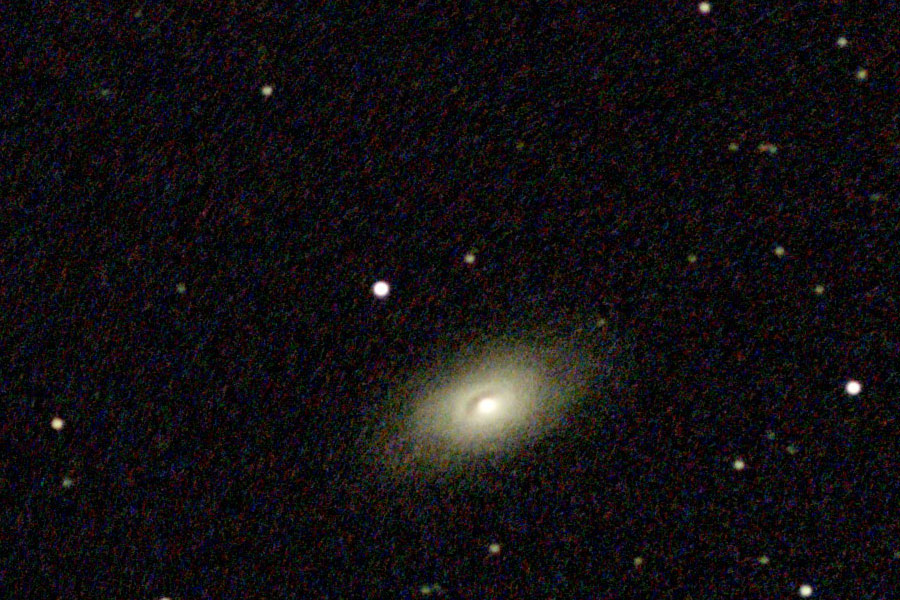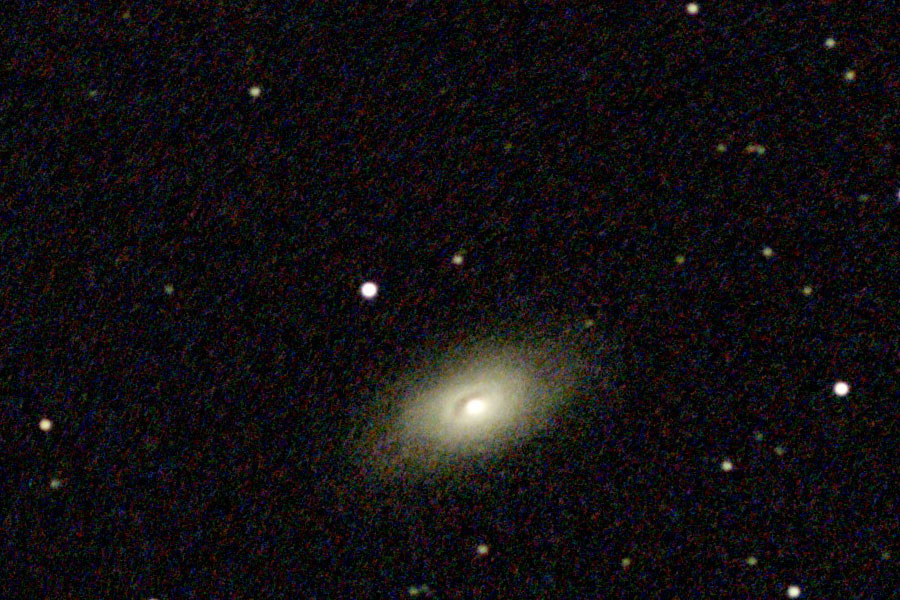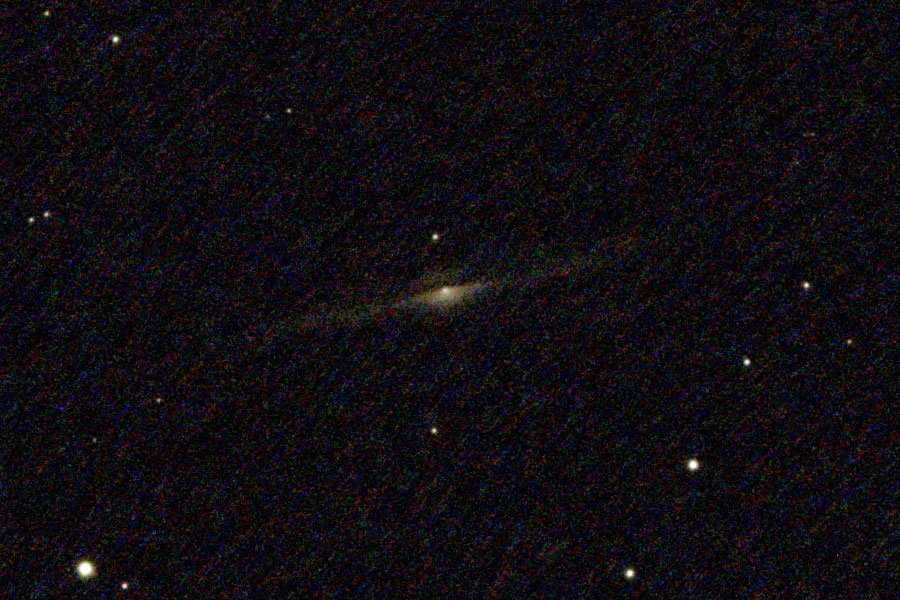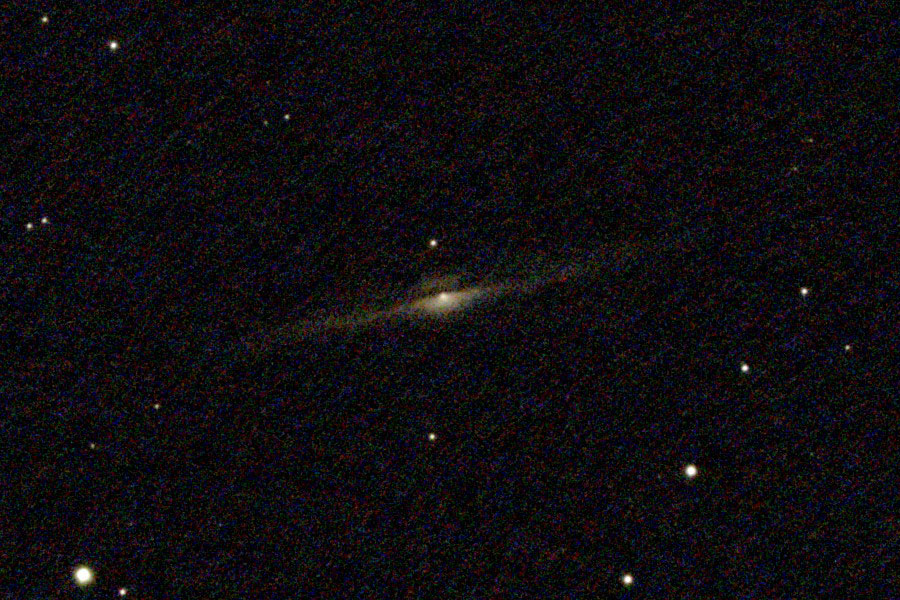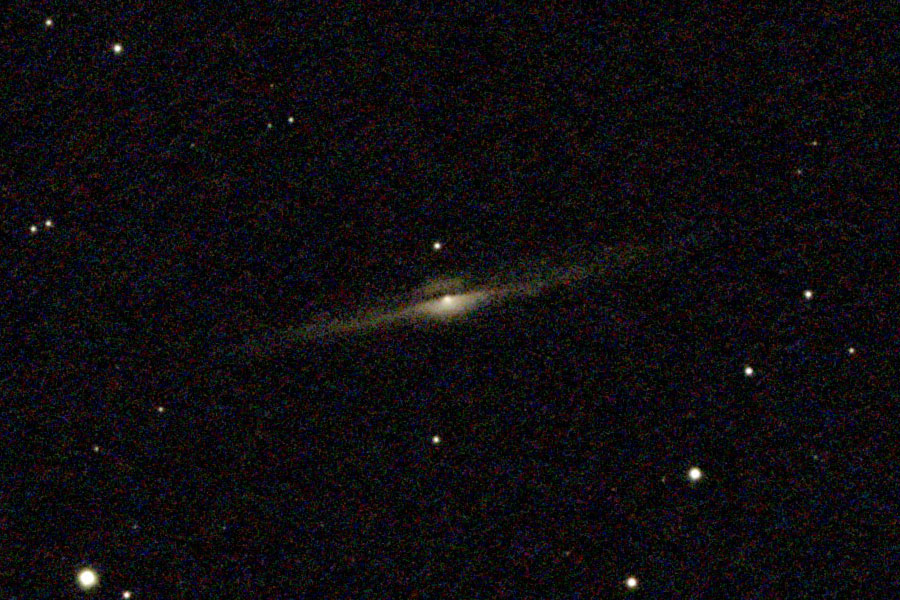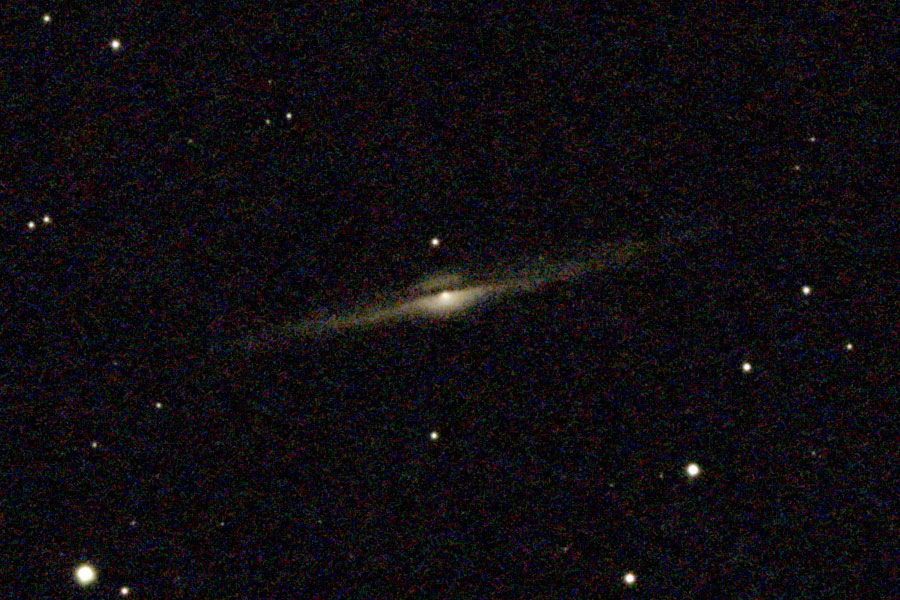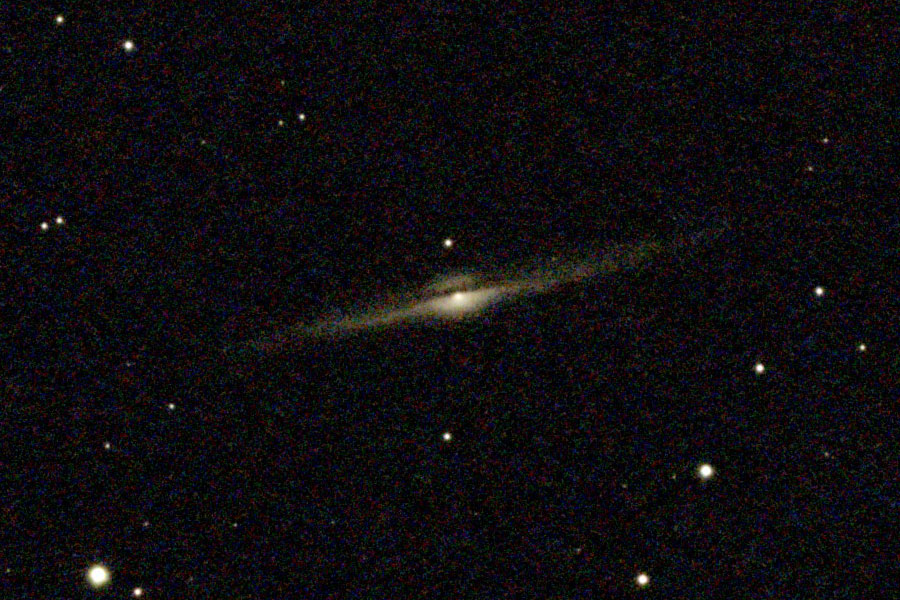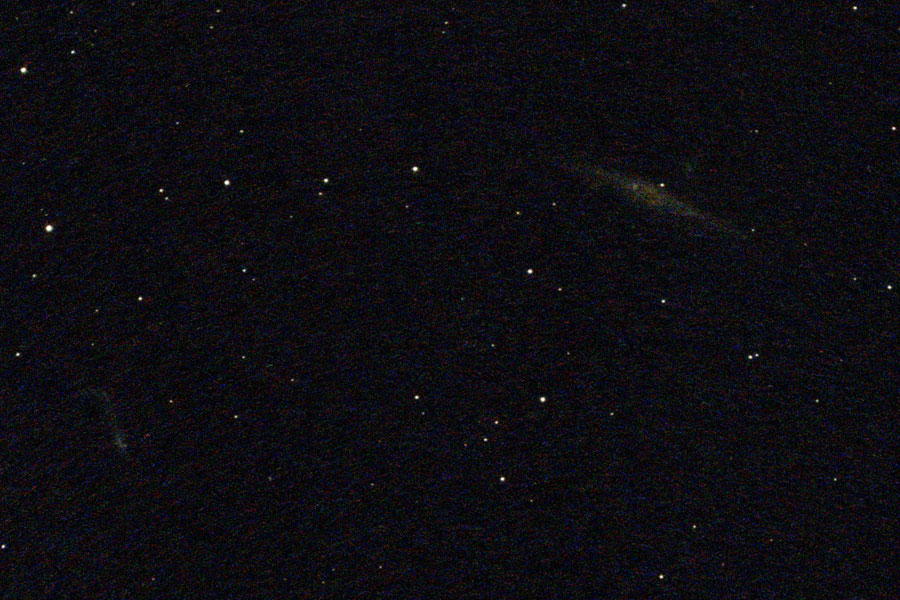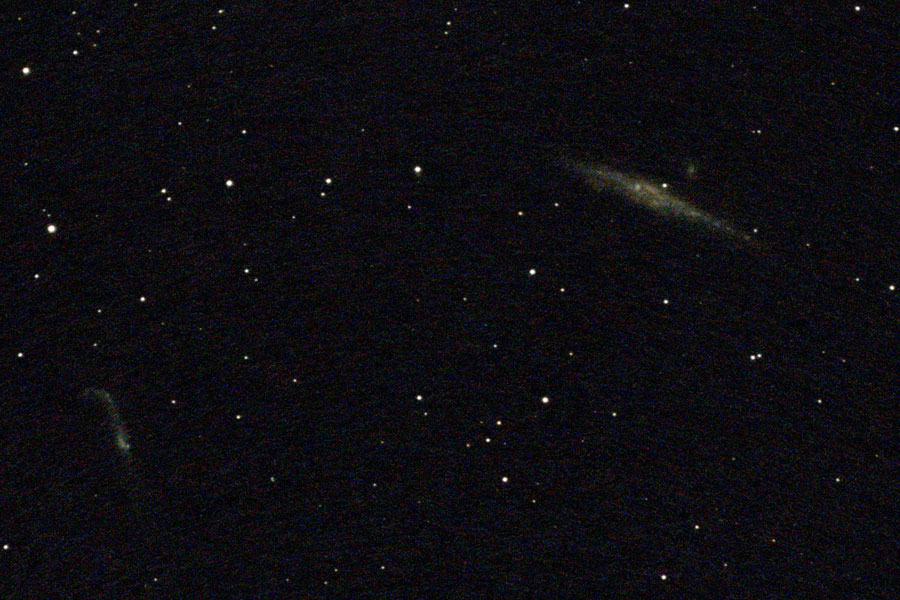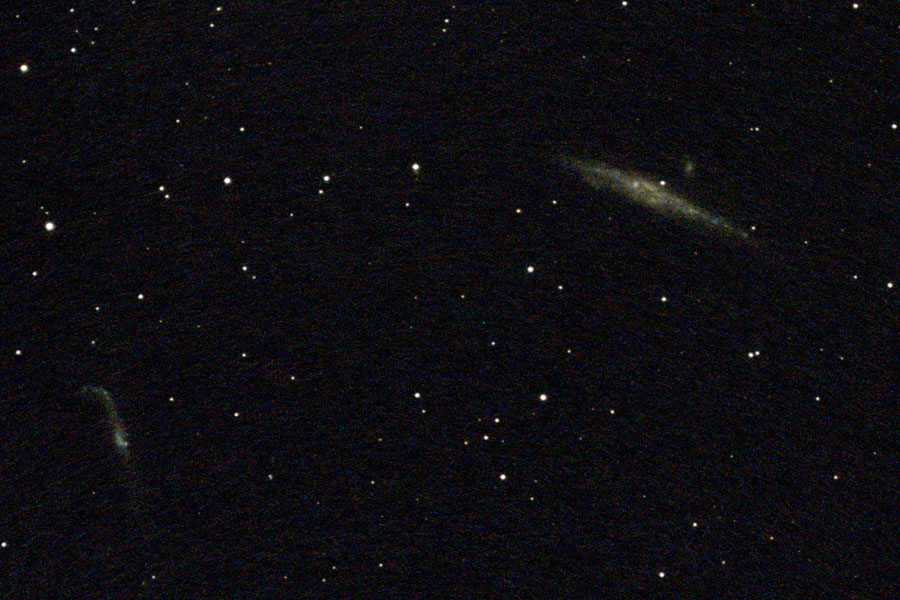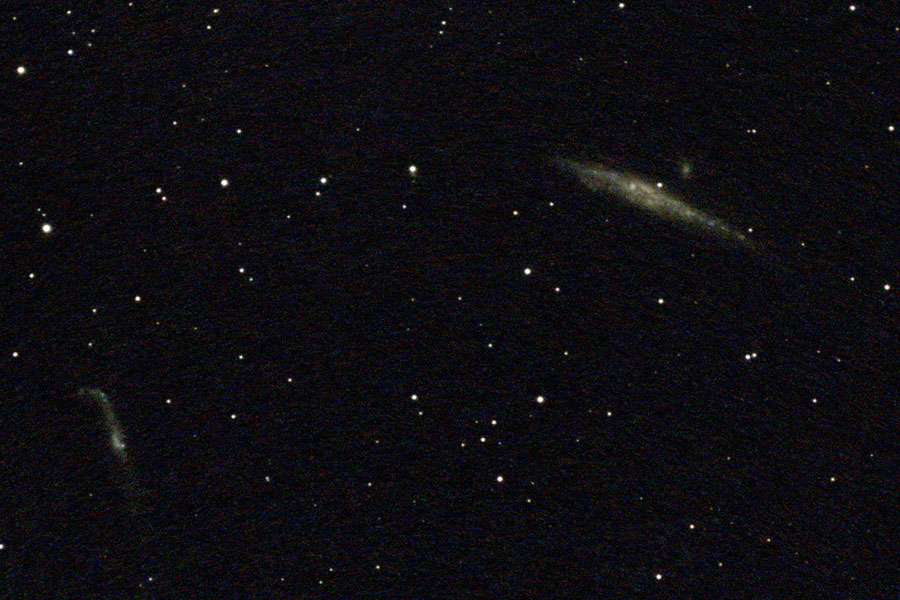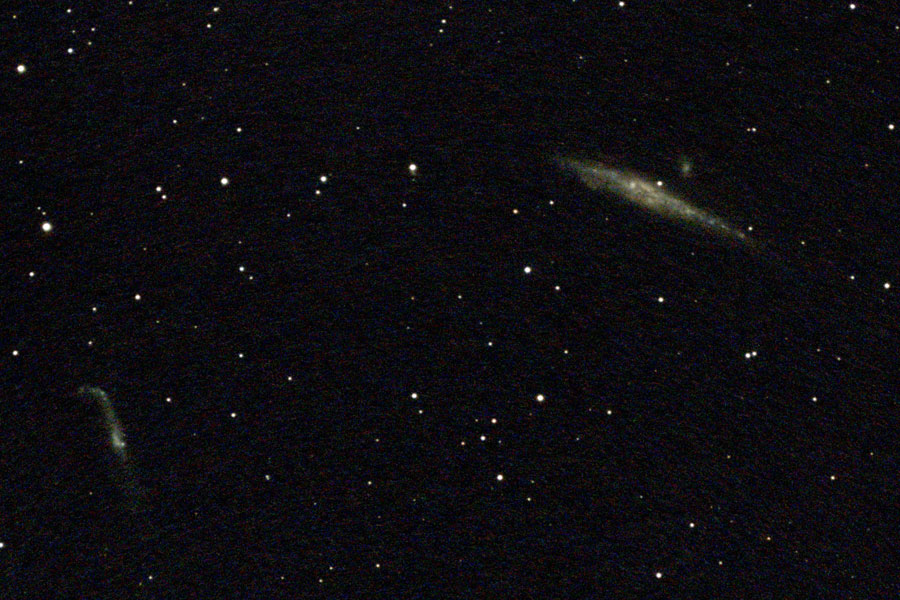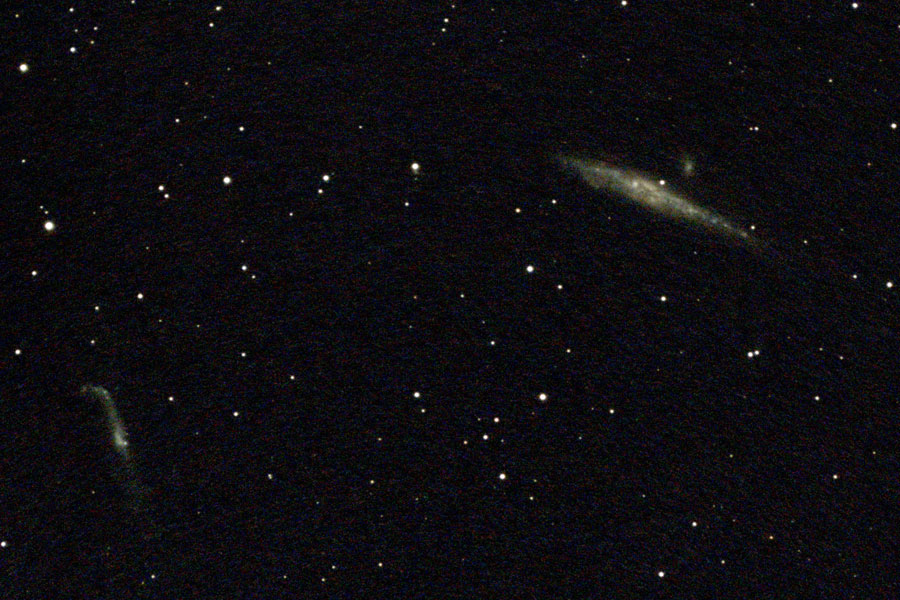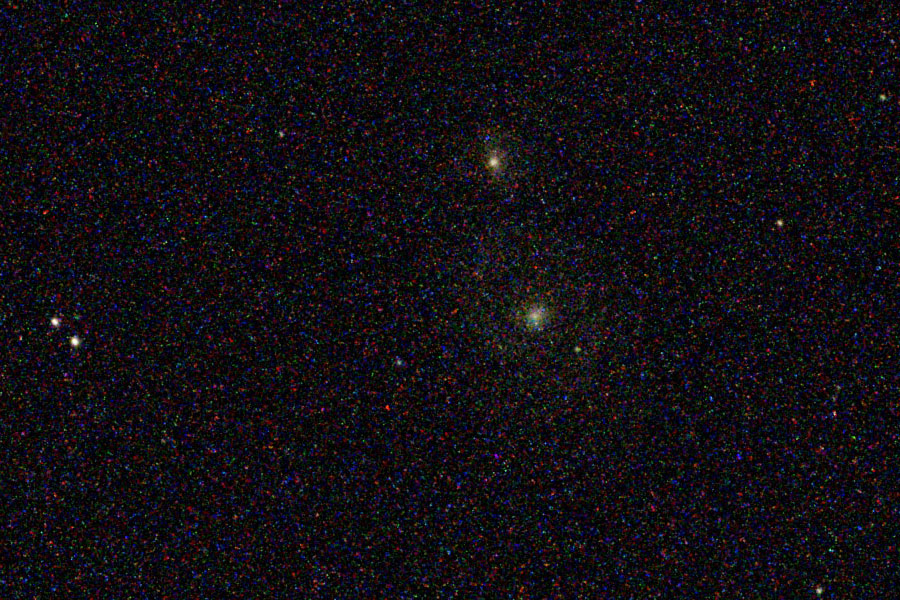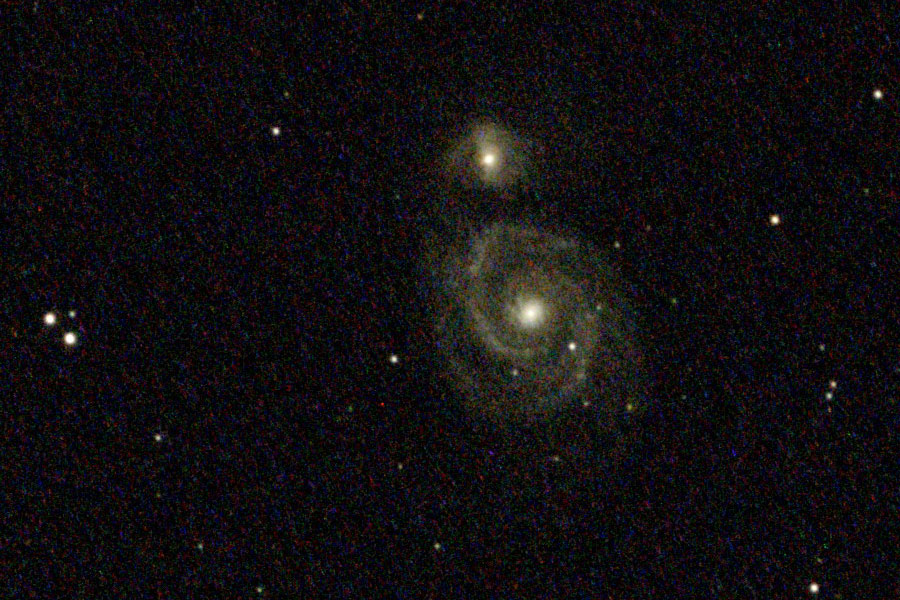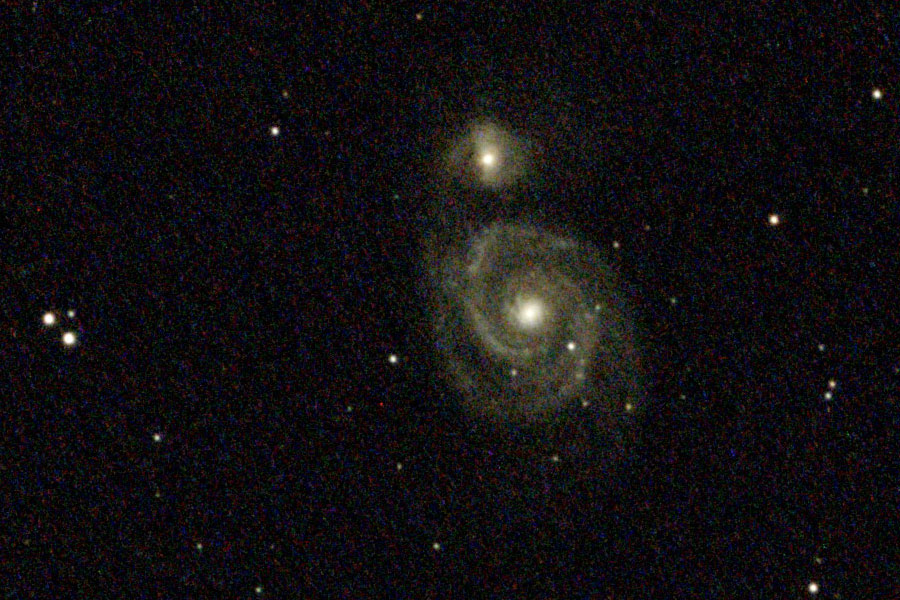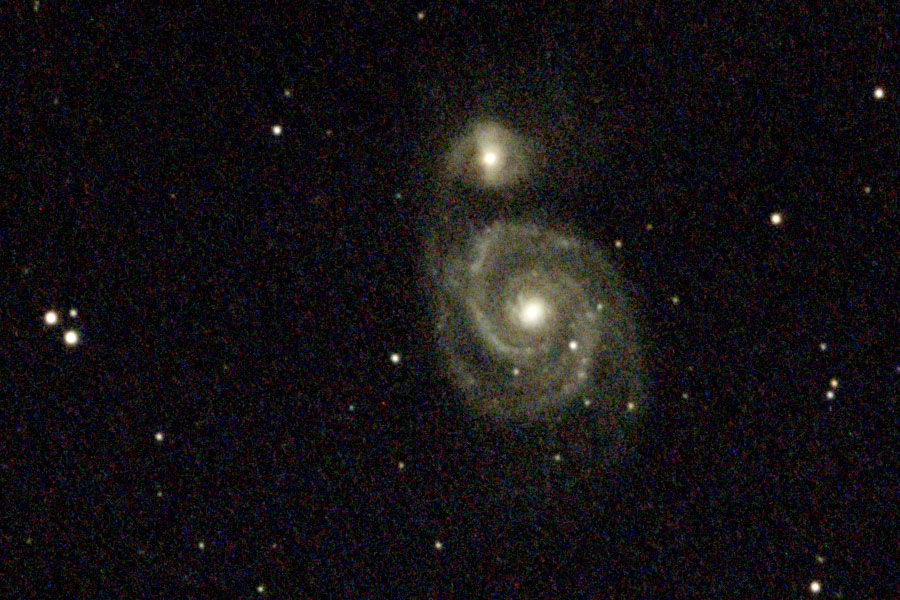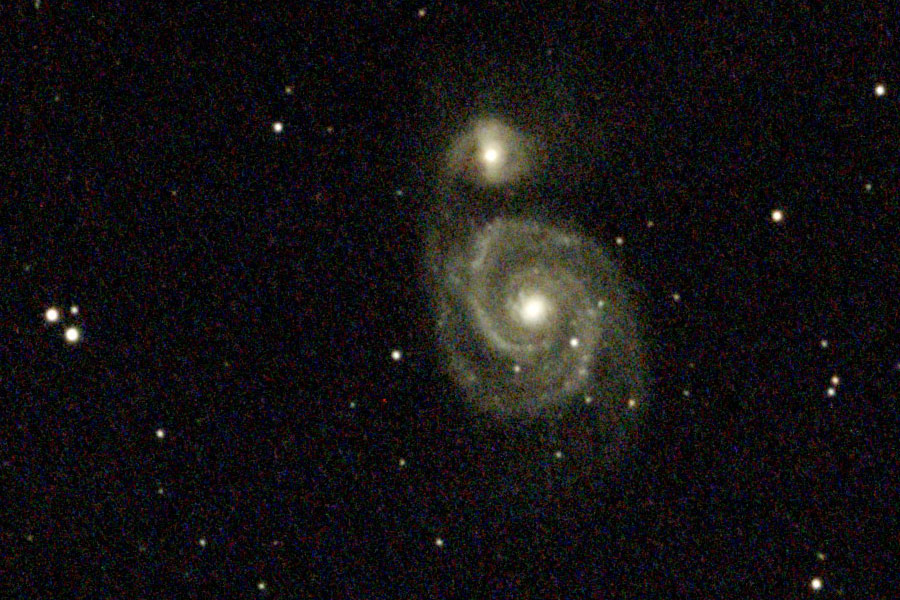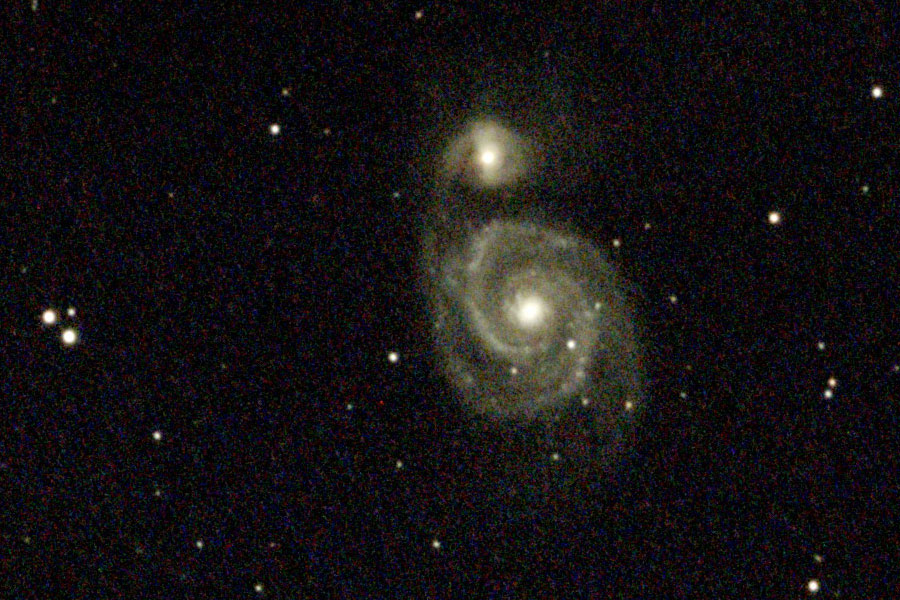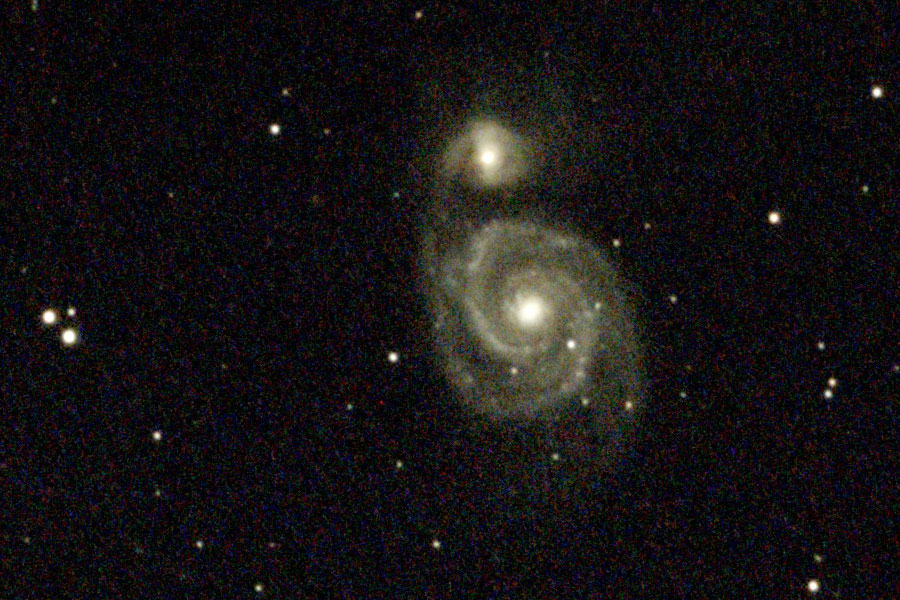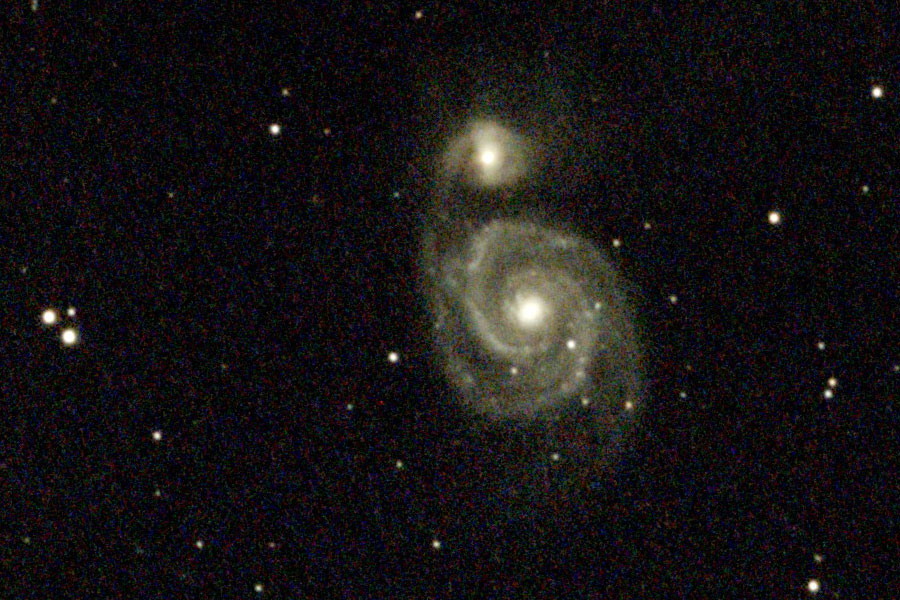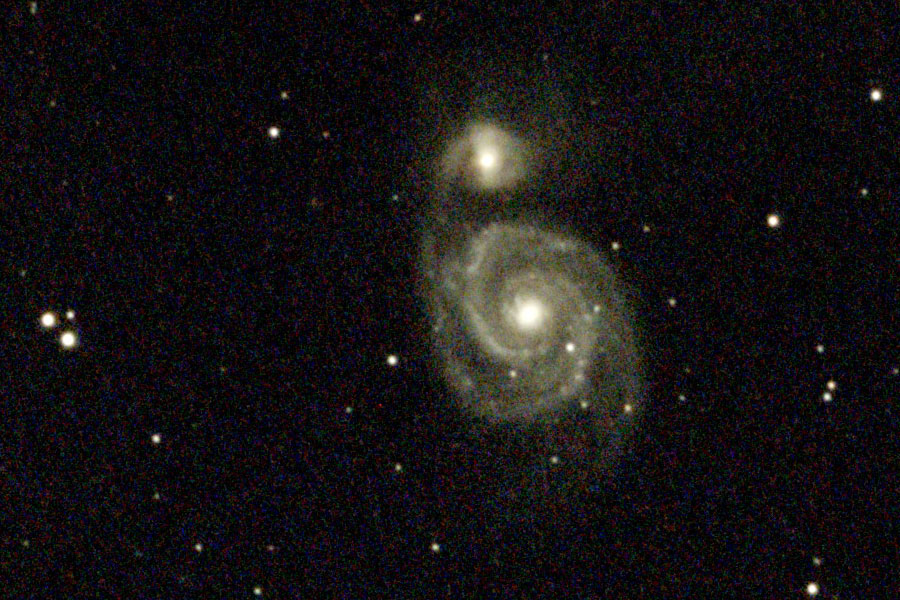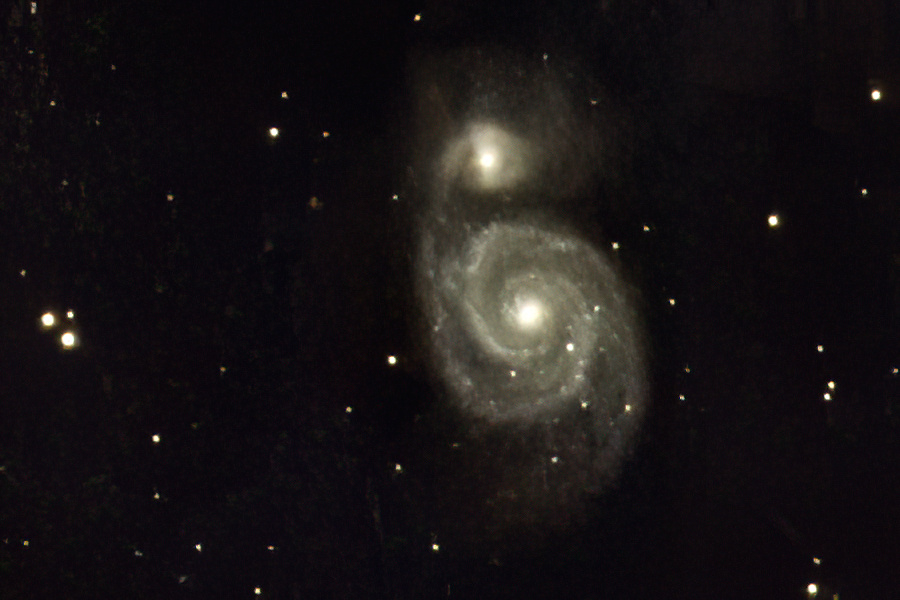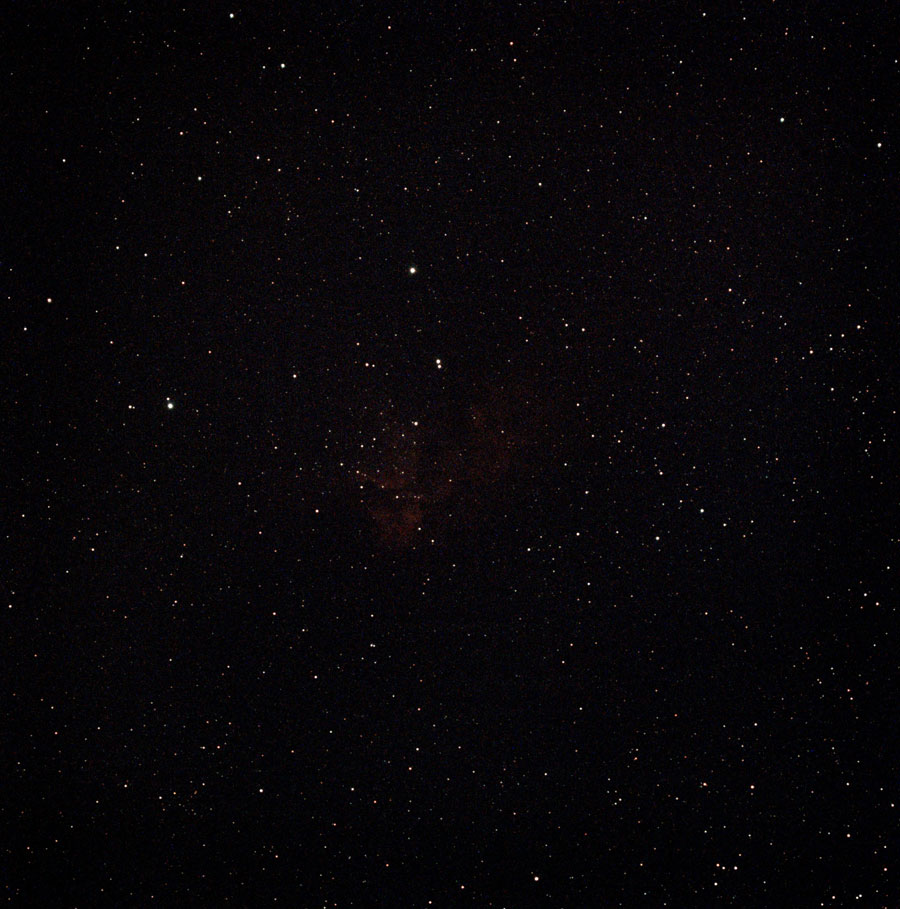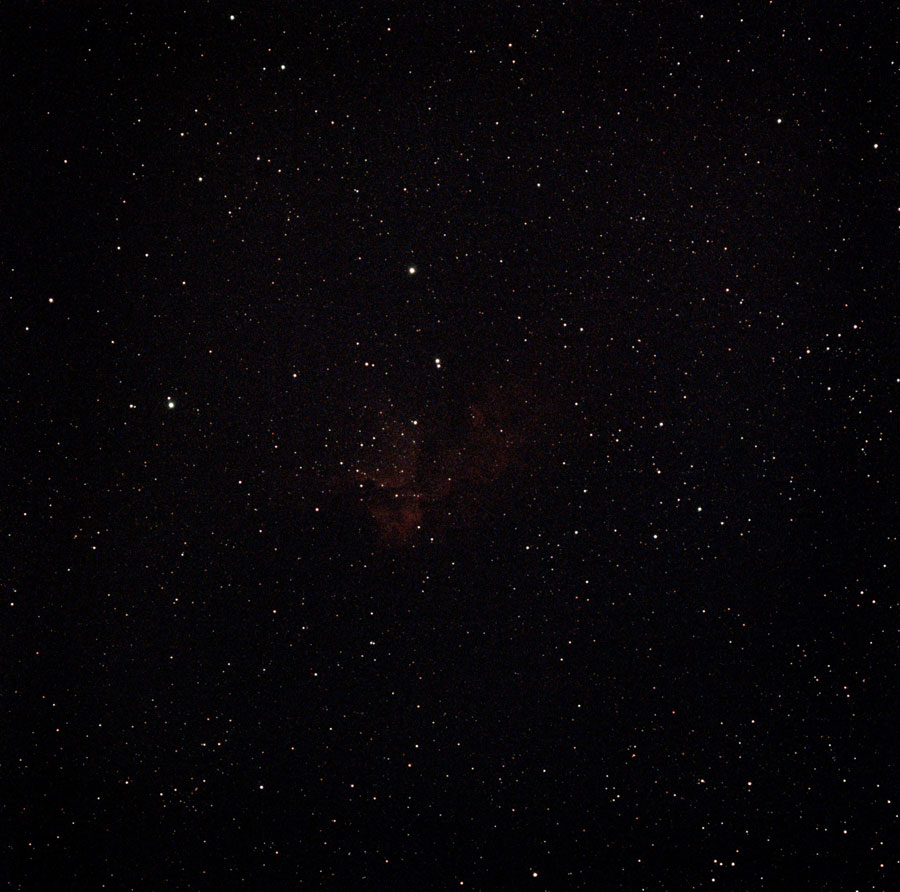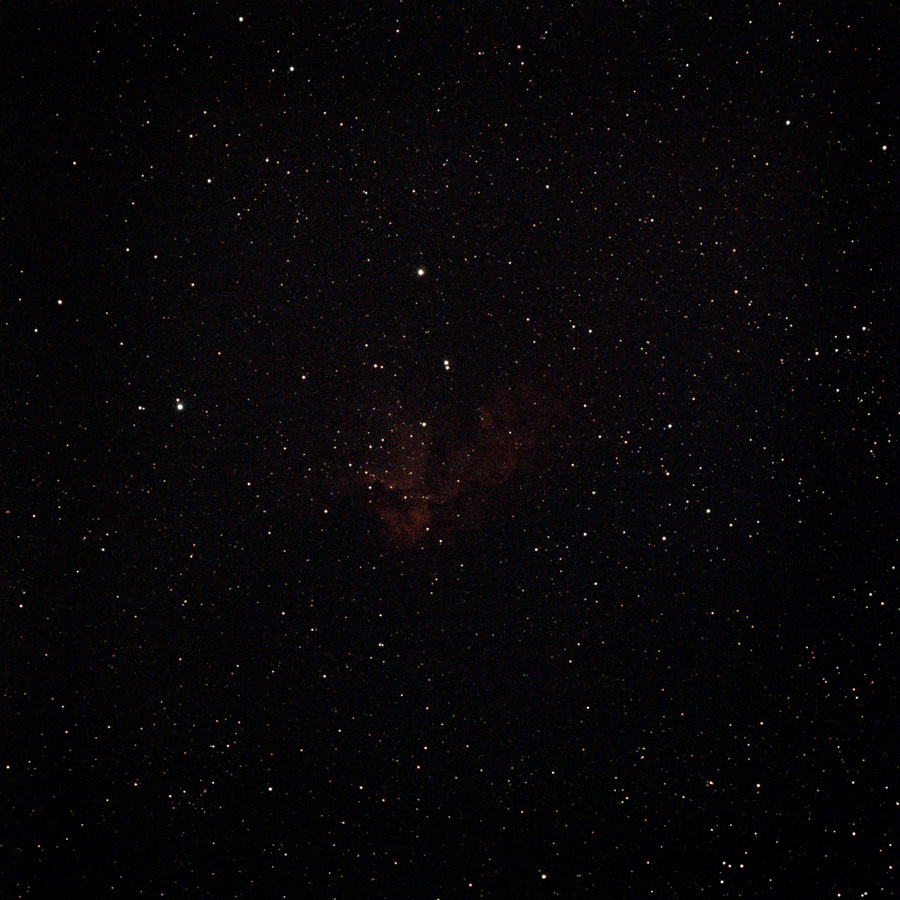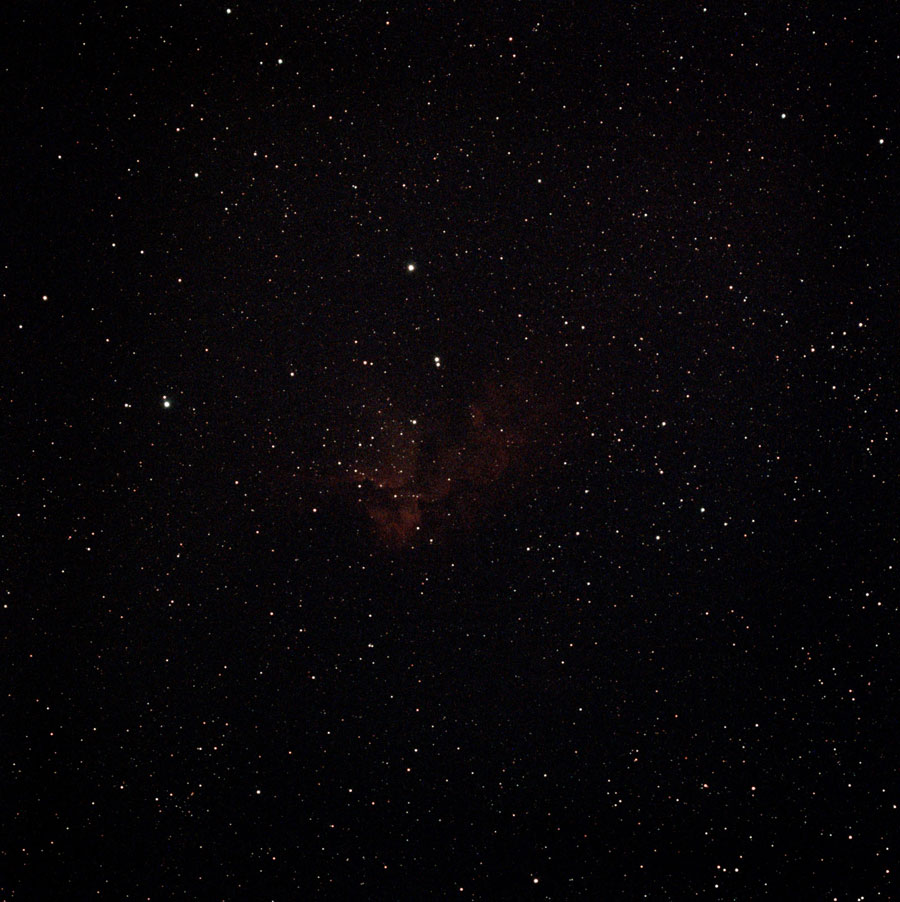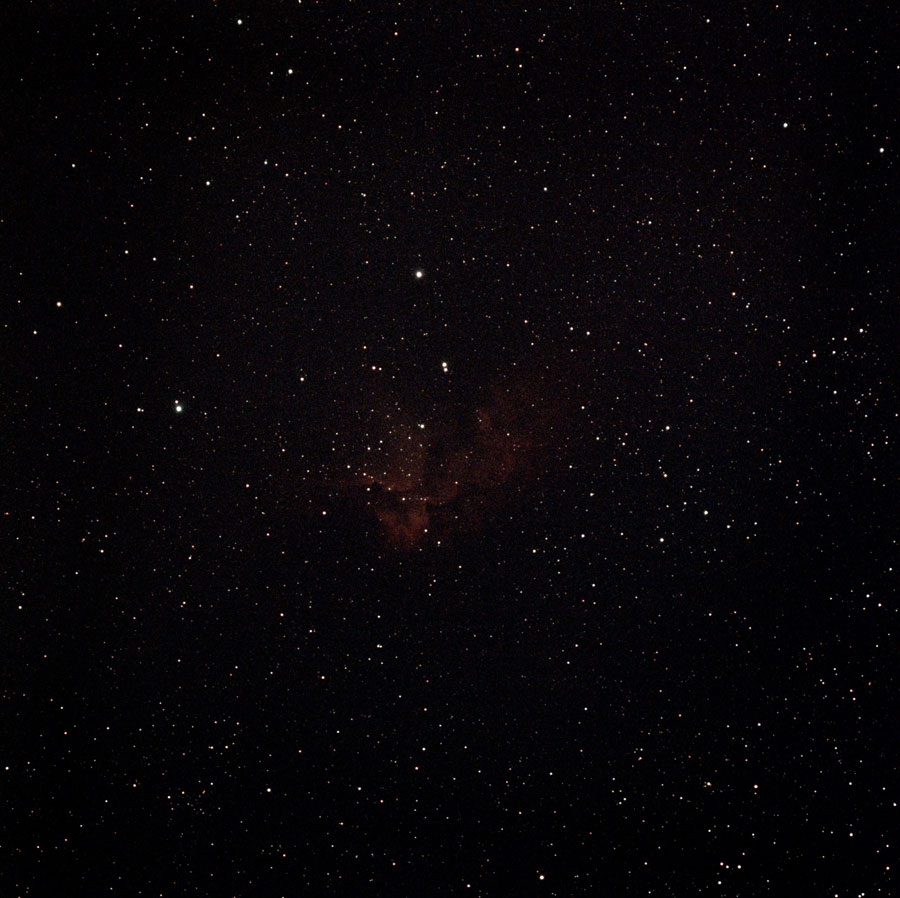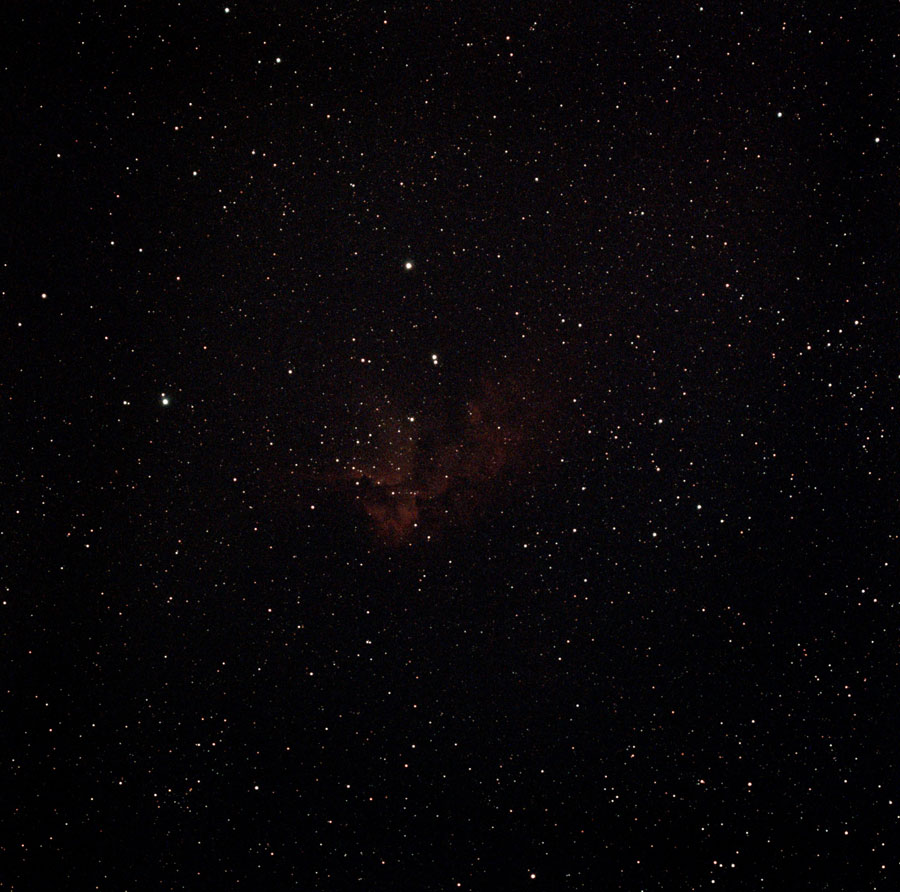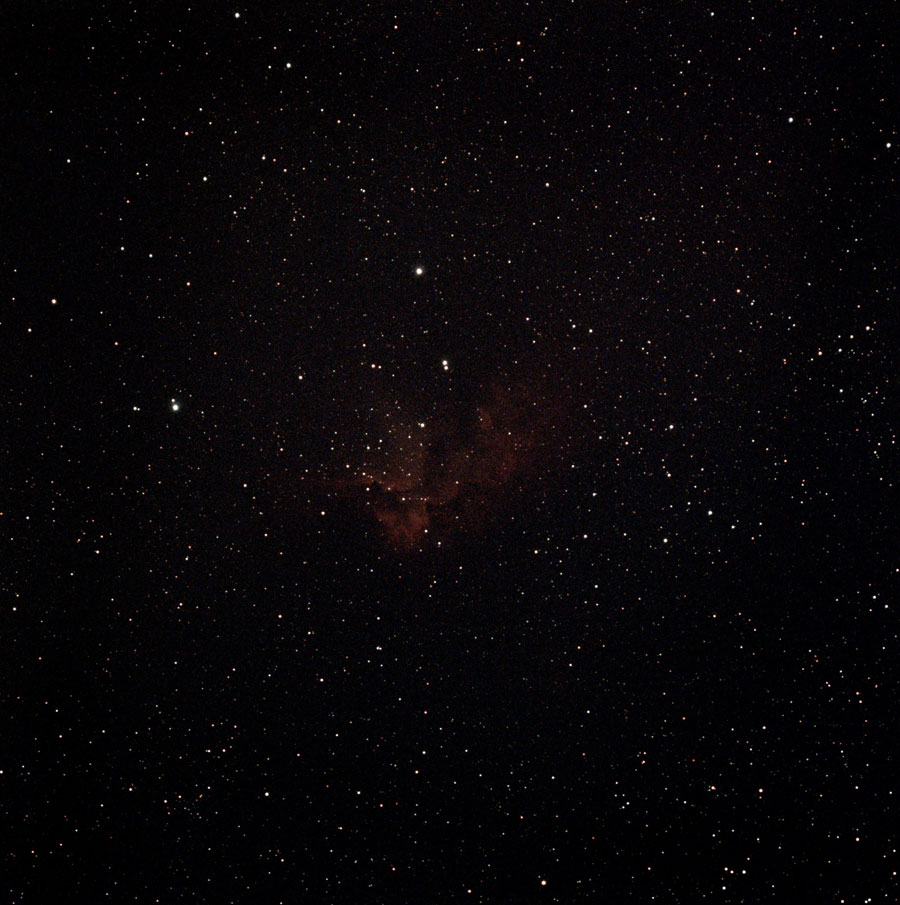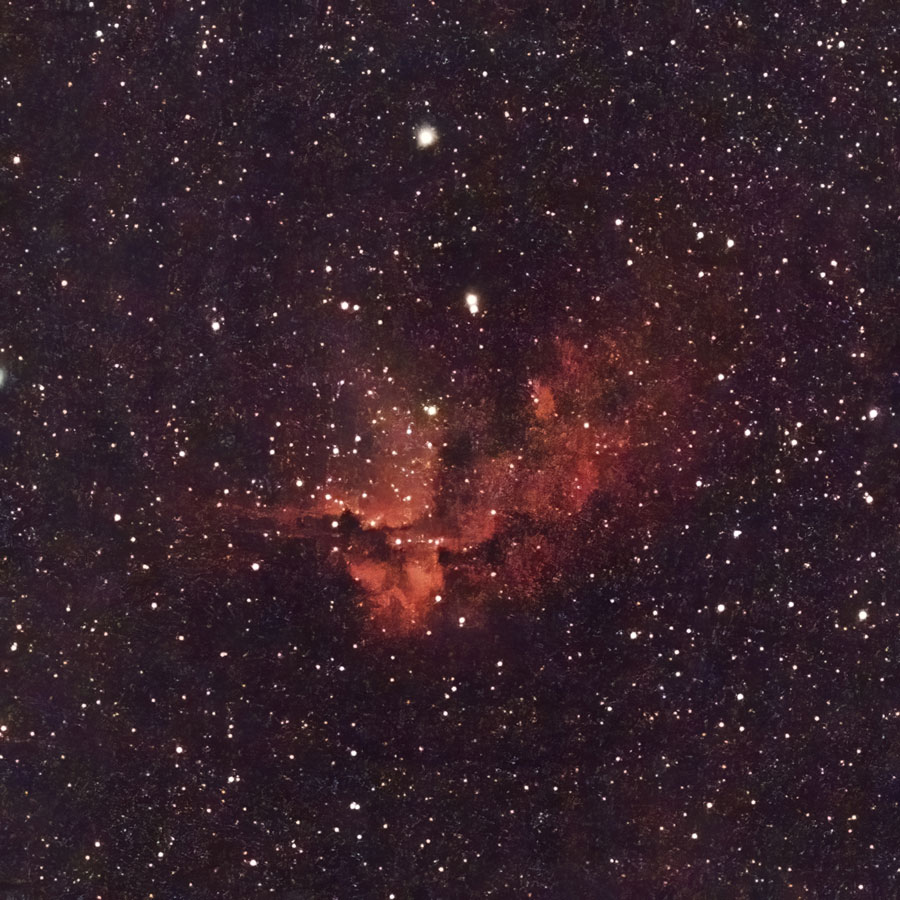Vaonis Vespera Pro - Photo Comparisons with Different Exposure Times
Introduction | Selected DSO with up to 15 Minutes of Exposure Time | Selected DSO with up to 30 Minutes of Exposure Time | Longer Exposed DSO | Preliminary Conclusions | Links
On this page I present photos from the same DSO that were taken with my Vaonis Vespera Pro at different exposure times. The point here is to show how the result changes during the first 20-30 minutes of observation and to find exposure times that lead to an "acceptable" result (depending on the DSO type). What "acceptable" means depends on the intended use case and the requirements of the user.
However, as it quickly became apparent that the Vespera Pro requires significantly longer exposure times than the original Vespera, I also present two observations of objects that require far longer exposure times (up to 80 minutes in the examples). This as a "side topic", so to speak... For long exposure times for nebulae, see page Vespera Pro - Photos with Long Exposure Times. There, I present only final results, because these are already very faint.
Notes:
- This page covers only "normal" photos, not mosaics.
- See also page Vaonis Vespera - Photo Comparisons with Different Exposure Times.
Introduction
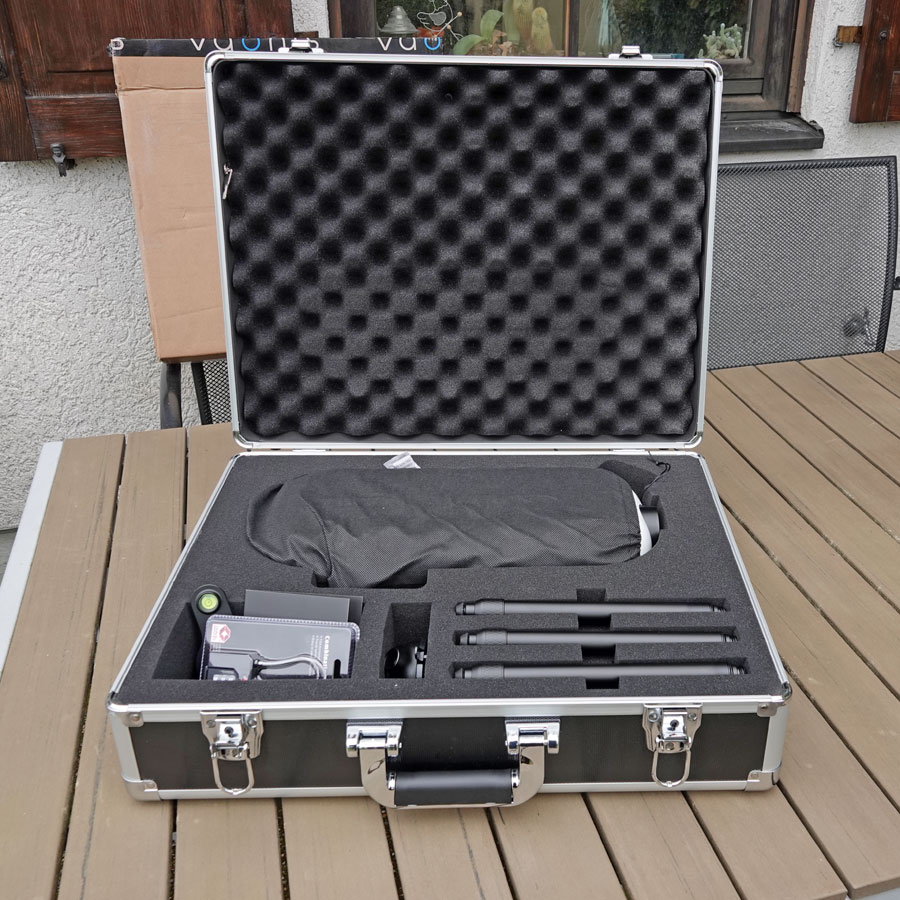 |
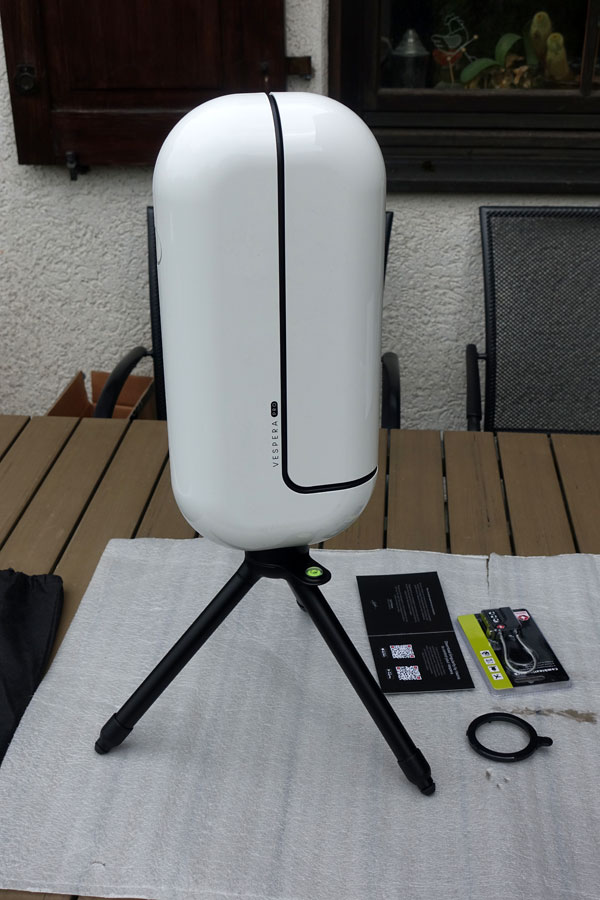 |
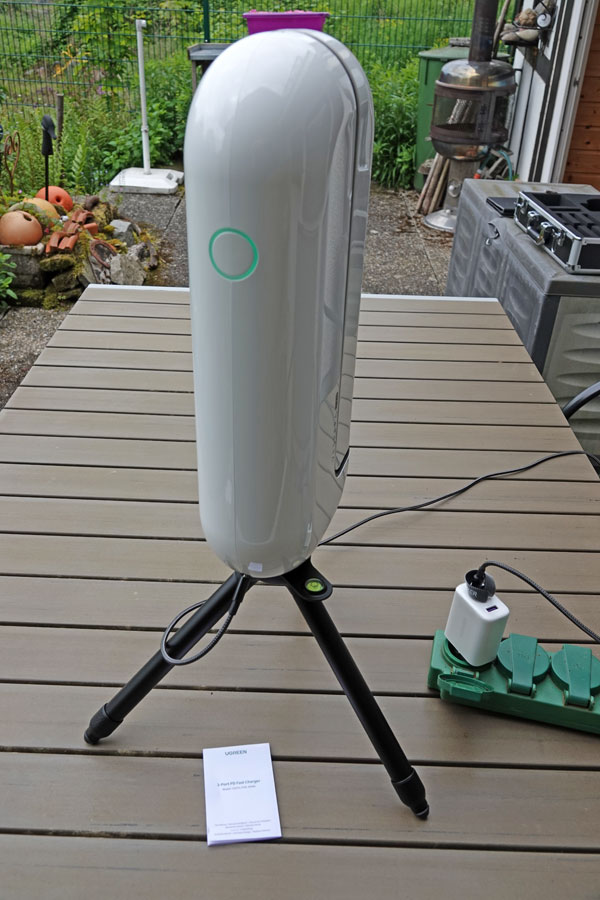 |
Photo: My Vaonis Vespera Pro (May 8, 2024)
The tests on this page are intended to investigate the extent to which the Vespera Pro can also be used to make observations with shorter exposure times in acceptable quality. By "acceptable" quality, I mean an image quality that is sufficient for the respective application in the opinion of the "amateur astronomer". Therefore, here are some "use cases" for the Vespera Pro!
Note: As far as exposure times and image quality are concerned, Vaonis has "shaken things up" with the mosaic mode. However, this means that normal shots and mosaic shots are not comparable in terms of exposure times, at least as long as the first mosaic run has not yet been completed (this takes about 15, depending on the size of the mosaic). For this reason, I will only deal with "normal" photos in the following, as we are talking about short exposure times here.
"Optimal" Photos
For many Vespera (Pro) owners, the "purpose of use" is solely to obtain "optimal" photos. Here, too, many owners have different ideas! Some try to achieve the "best possible" result by working for hours with the best software tools and possibly extremely long exposure times and/or by combining different shots*.
*) Among Vespera (Pro) owners it seems to have become common to combine (stack) TIFF files (final state of the image stack in TIFF format) from different observations with the same device or even with different devices.
Other owners, often those with an EAA background*, are neither willing to expose for a long time nor to post-process for a long time. Especially when it comes to post-processing, they do not want to spend a lot of time and effort, but want to achieve results quickly (in just a few minutes). For them, the results are then certainly "optimal", but usually far from the results achieved by the first group mentioned. I would count myself among these people.
*) EAA = electronically augmented astronomy: basically the "component version" of smart telescopes in recent years (when there were hardly any); typically, its proponents never aimed at high image quality, but emphasized the "observing experience" (which typically lasted only a few minutes per DSO).
Further Applications
In addition to putting the focus on individual images, there are further applications for the Vespera (Pro) that a number of owners pursue and for which the very best image quality is not necessarily the most important thing.
Galaxy hunting: It is "galaxy season" in spring, and if you "aim" at the constellation Virgo, for example, you can combine many galaxies in one image. However, most of them only look like blurred stars and do not show any details. I then use the Web site nova.astrometry.net to identify the objects, because I can only recognize a few of them myself.
Admittedly, the Unistellar eVscope telescopes (Equinox for the rest of us (CloudyNights)) are better suited to galaxy hunting (1-2 min exposure time is often sufficient), but I have also been successful in this discipline with my Vespera Pro! However, I mostly took mosaics in order to have the largest possible field of view, which requires correspondingly long exposure times (at least 30-40 min).
Working through object lists: Probably the best-known catalog of DSOs is the Messier catalog (110 objects). There is now a competition called the Messier Marathon, in which you try to observe all or as many objects from the catalog as possible in one night. It is sufficient to briefly identify an object visually, but reliable identification on photos/screens usually requires at least a few minutes of exposure time. That is a lot of hustle and bustle if you want to spot everything in one night! Of course, there are also variants of this competition that give the observer more time (in the end, everyone can decide for themselves...), but certainly no one wants to work through the list of Messier objects with a "speed" of one object per night (which would be the case if you want to achieve optimal results and expose an object all night or even longer).
In addition to the Messier catalog, there are other lists such as the Herschel 400 catalog or the list of 100 Herschel objects from Stoyan's Herschel Guide (see also Herschel 100+10-List). And finally, anyone can make their own lists from DSO that they want to work through. But for all these lists, you do not want to spend too long on one object, but you do want to see the object in acceptable quality.
Demonstration for other observers: When I wanted to demonstrate my Unistellar eVscope to friends, I quickly learned (and already suspected beforehand...) that the attention span of "astronomy lay people" is very limited. Since you typically look at the result on the screen of a smartphone or tablet computer, this is the "measure of all things" and not a "final result" on a large computer screen or a printout. In my opinion, the photos on the smartphone/tablet also look much better and more contrasty (in the dark!) than later after transferring them to the computer (in the light!). It is therefore important to capture the attention of the observers on this (small) screen, and this rarely works for longer than 3-5 minutes per object. Promising the guests that a photo will look much, much better after 10 or 30 minutes is of no use at all. By then they will have all run away!
I have to admit that the eVscope is much better suited to this purpose than the Vespera (Pro). Some objects, especially star clusters, are easy to recognize after one minute and many have already reached their "optimum" for the presentation after 3-5 minutes. With the Vespera (Pro), this takes a couple of minutes longer. I have never investigated this in more detail, but a waiting time of 5 minutes should not be exceeded for demonstrations. 10 minutes waiting time* is definitely too long!
*) An EAA proponent makes regular demonstrations on the Internet, where you can follow the whole observation. He stayed on a DSO for a maximum of 10 minutes and read object descriptions from Wikipedia in between. This made it bearable, especially as the guests were (or still are) all hobby astronomers...
Conclusion
To cut a long story short: There can be many reasons why you do not want to expose DSO with the Vespera Pro for hours in order to achieve an "optimal" result, but instead want to expose DSO as briefly as possible without having to make major compromises in terms of image quality. On this page, I try to give you some clues as to which exposure times can be sufficient for certain applications of the Vespera Pro (provided that the sky is dark enough!).
What is on this Page?
In the following, I present "test sequences" of photos with different exposure times and with intermediate stages:
- Observations of selected DSO (and DSO types) with up to a maximum of 30 minutes exposure time and with intermediate stages (mostly every 5 minutes).
- Observations of "long exposure" DSO. These photos were exposed for a maximum of 1 hour (intermediate photos every 10 minutes).
Selected DSO with up to 15 Minutes of Exposure Time
In the following, I present observations of selected DSO with up to 15 minutes exposure time and with intermediate stages. Here I tried to consider different DSO types to show the differences in exposure (up to now only globular star clusters). All photos are unprocessed!
M 11 (Scutum) - 30 Minutes Recommended
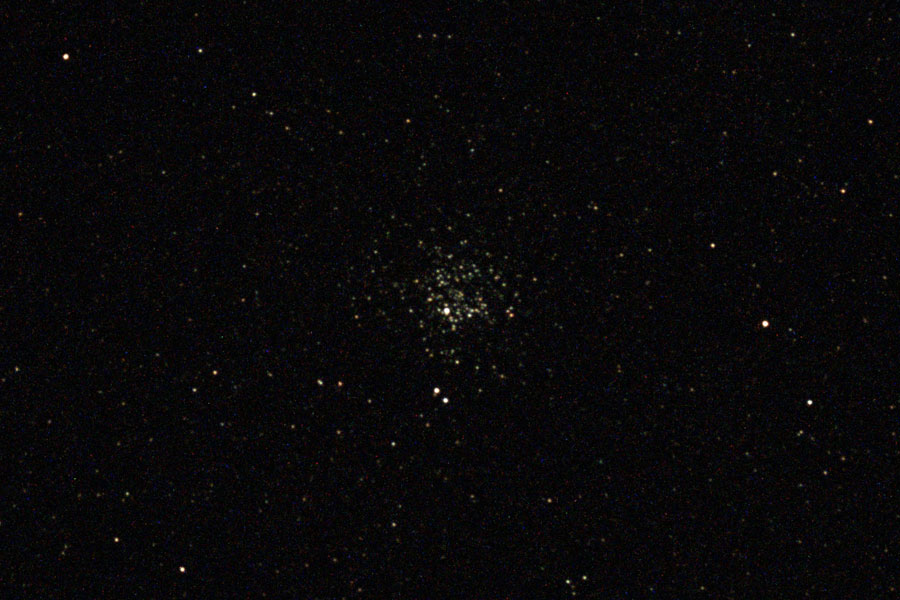 |
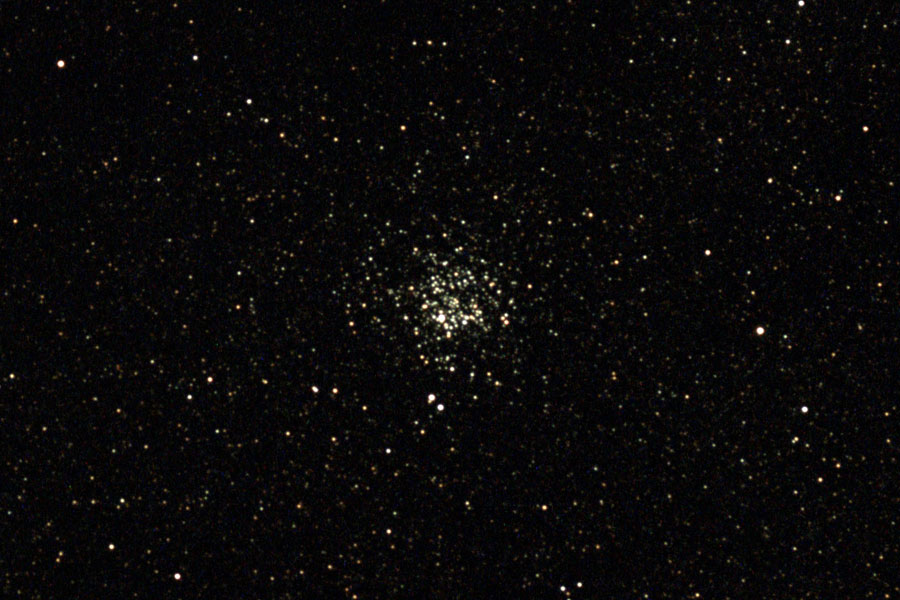 |
|
M 11, June 28, 2024 - 1. frame (1:1 section) |
M 11, June 28, 2024 - 2.5 min |
|
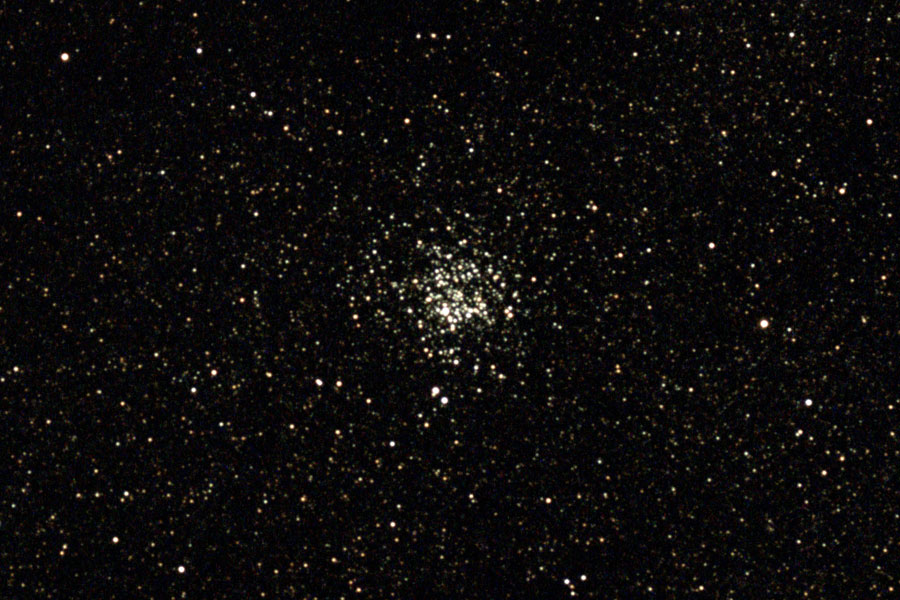 |
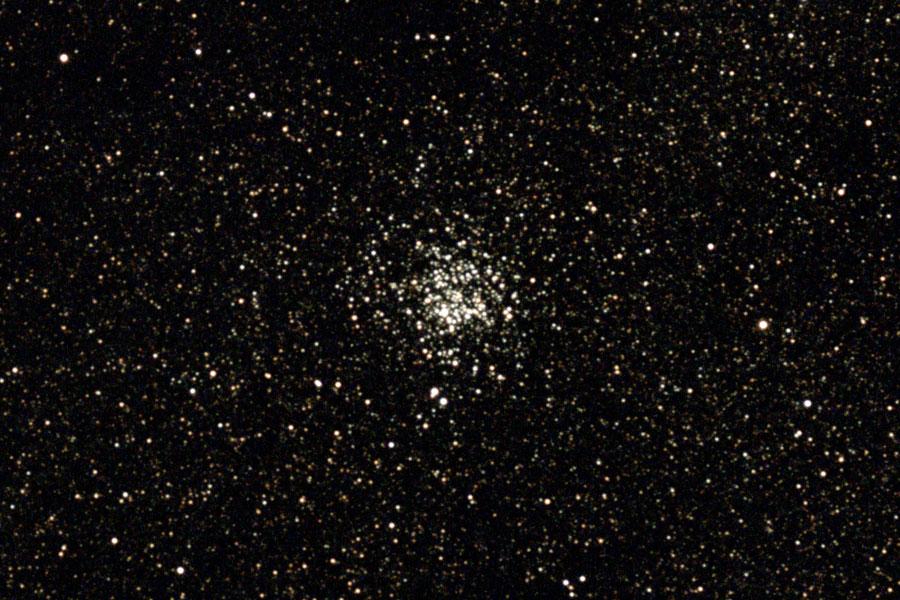 |
|
M 11, June 28, 2024 - 5 min |
M 11, June 28, 2024 - 10 min |
Comment: For "observers" the photos may be OK after 5-10 minutes. For "photos" they may be acceptable after more than 15 min...
M 13 (Hercules) - 15 Minutes Recommended
 |
 |
|
M 13, June 4, 2024 - 1. frame (1:1 section) |
M 13, June 4, 2024 - 2.5 min |
|
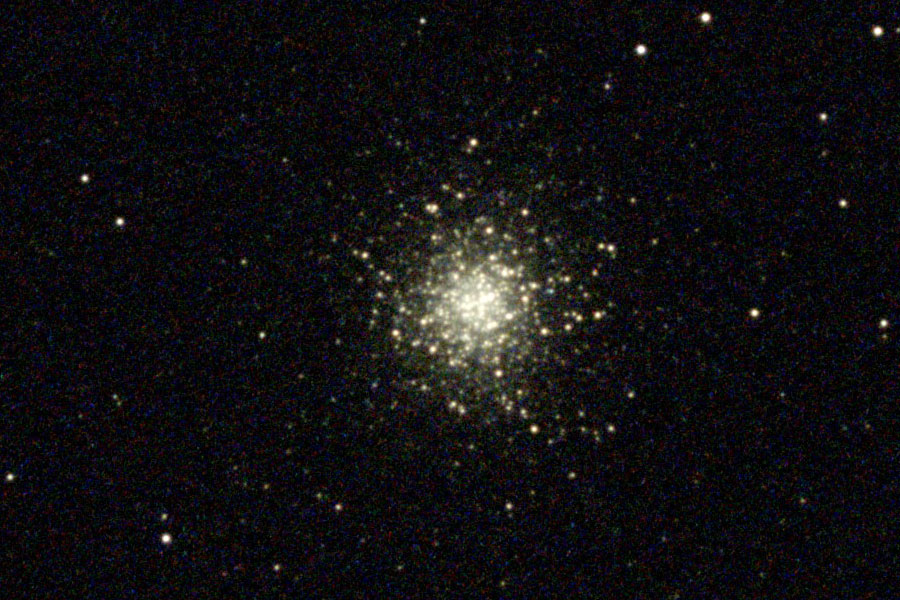 |
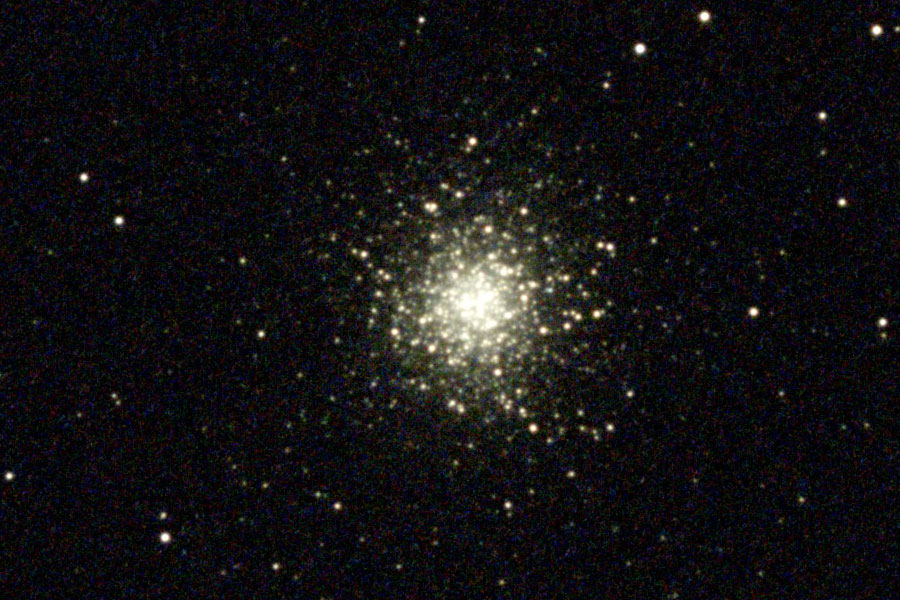 |
|
M 13, June 4, 2024 - 5 min |
M 13, June 4, 2024 - 10 min |
|
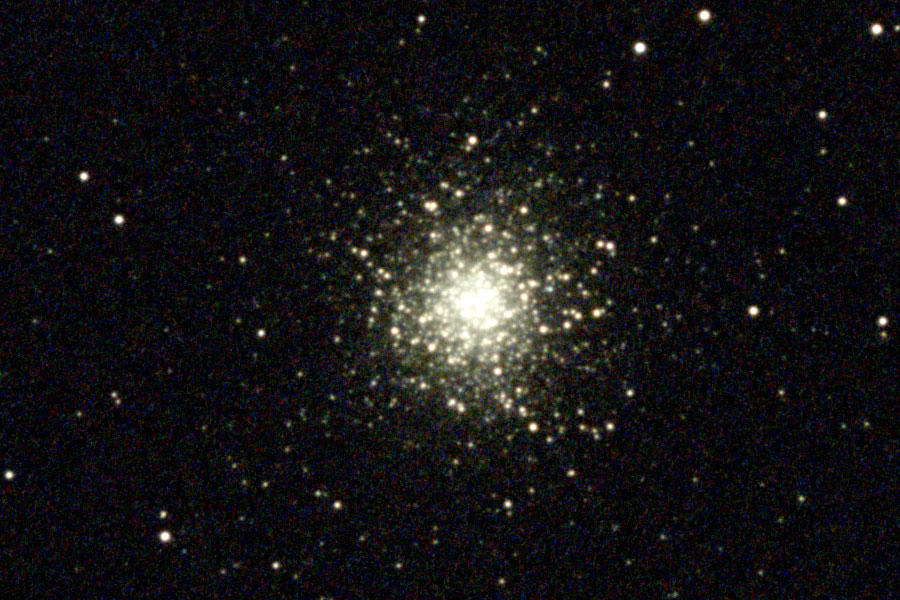 |
||
M 13, June 4, 2024 - 15 min |
|
Comment: For "observers" the photos may be OK after 10-15 minutes. For "photos" they may be acceptable after more than 15 min...
M 16 (Serpens) - 30 Minutes Recommended
 |
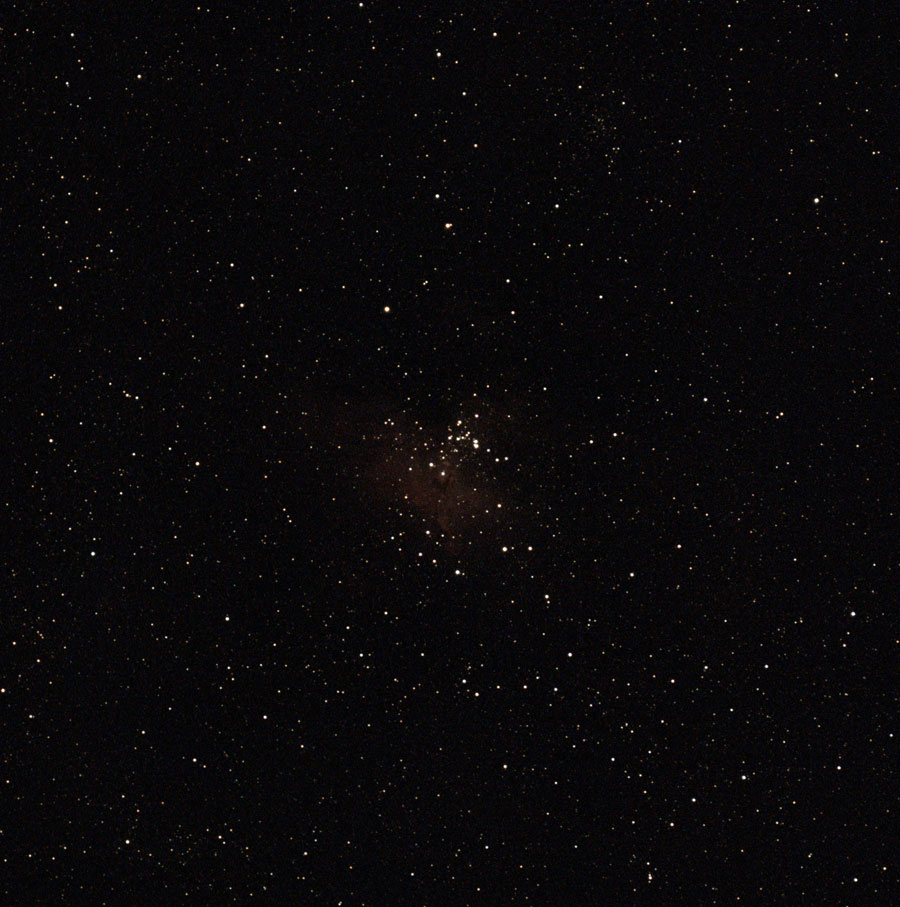 |
|
M 16, June 28, 2024 - 1. frame |
M 16, June 28, 2024 - 2.5 min |
|
 |
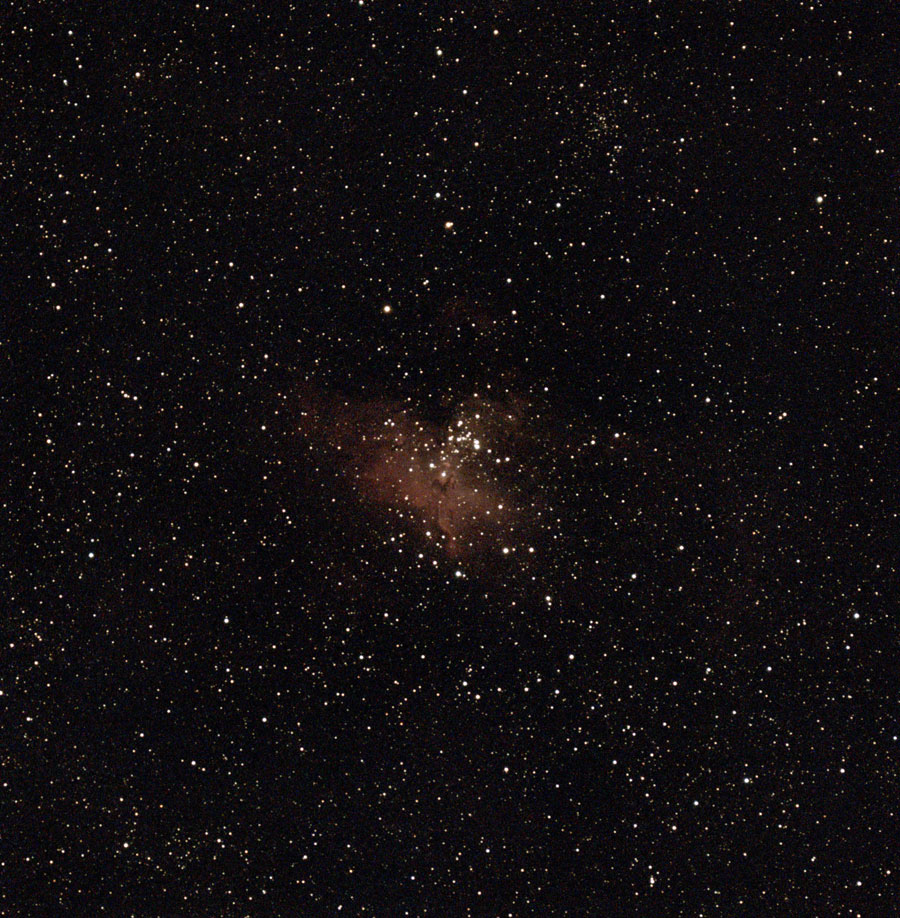 |
|
M 16, June 28, 2024 - 5 min |
M 16, June 28, 2024 - 10 min |
|
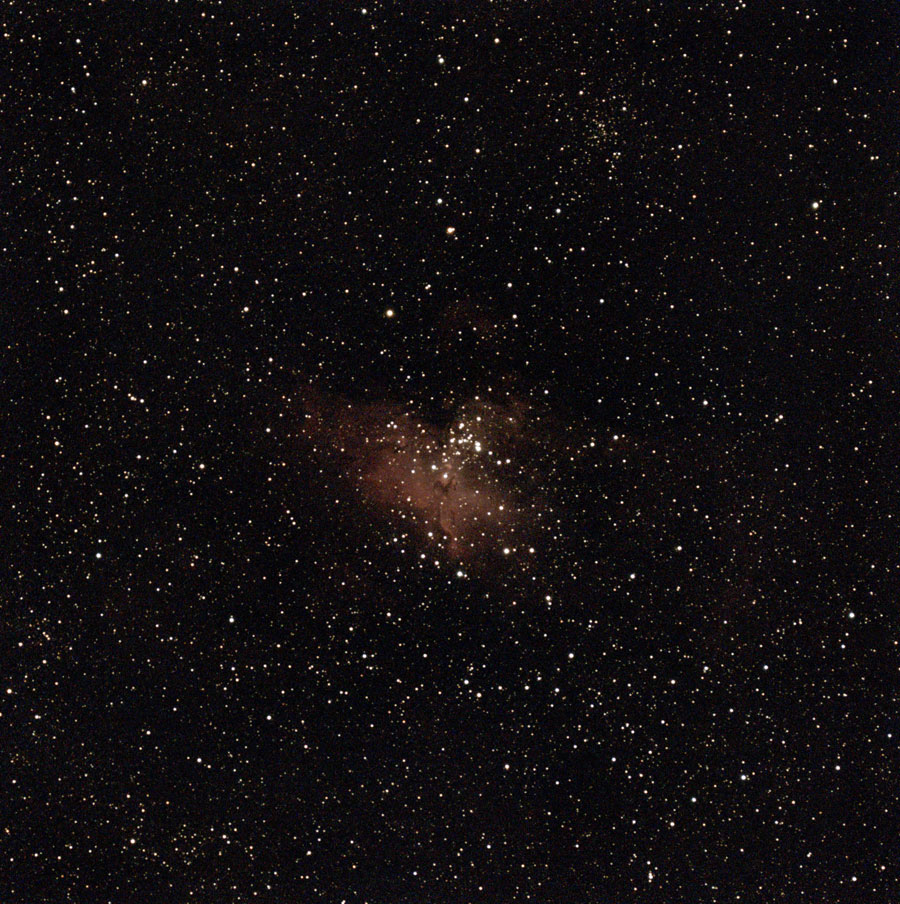 |
||
M 16, June 28, 2024 - 15 min |
|
Comment: The photos are rather dark for an exposure time below 10 minutes. For "observers" the photos may be OK after 10-15 minutes. For "photos" they may be acceptable after more than 15 min...
M 17 (Sagittarius) - 30 Minutes Recommended
 |
 |
|
M 17, Jun 28, 2024 - 1. frame |
M 17, Jun 28, 2024 - 2.5 min |
|
 |
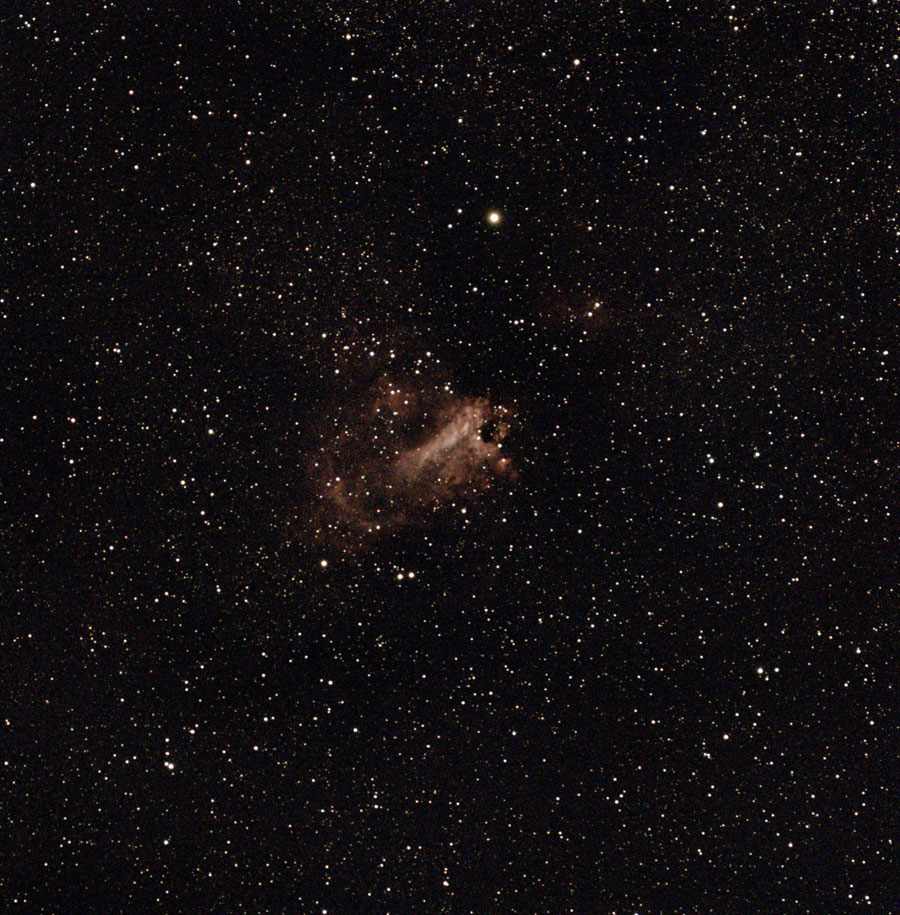 |
|
M 17, Jun 28, 2024 - 5 min |
M 17, Jun 28, 2024 - 10 min |
|
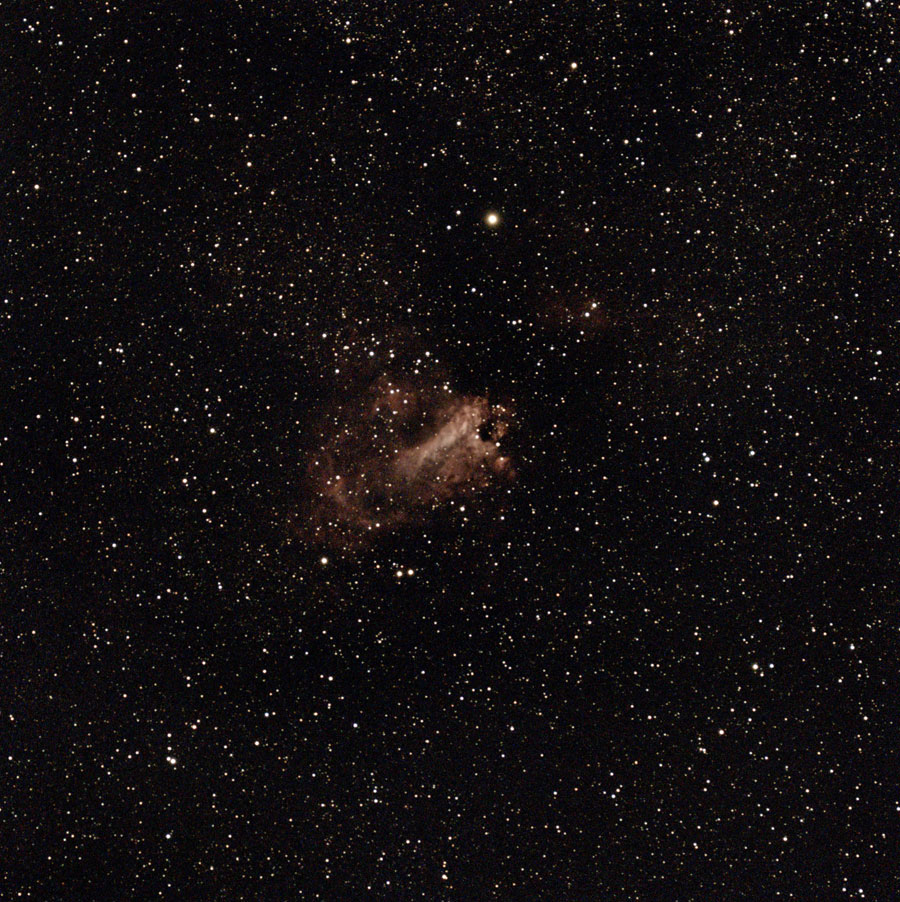 |
||
M 17, Jun 28, 2024 - 15 min |
|
Comment: The photos are rather dark for an exposure time below 10 minutes. For "observers" the photos may be OK after 10-15 minutes. For "photos" they may be acceptable after more than 15 min...
M 42/43 (Orion) - 20 Minutes Recommended
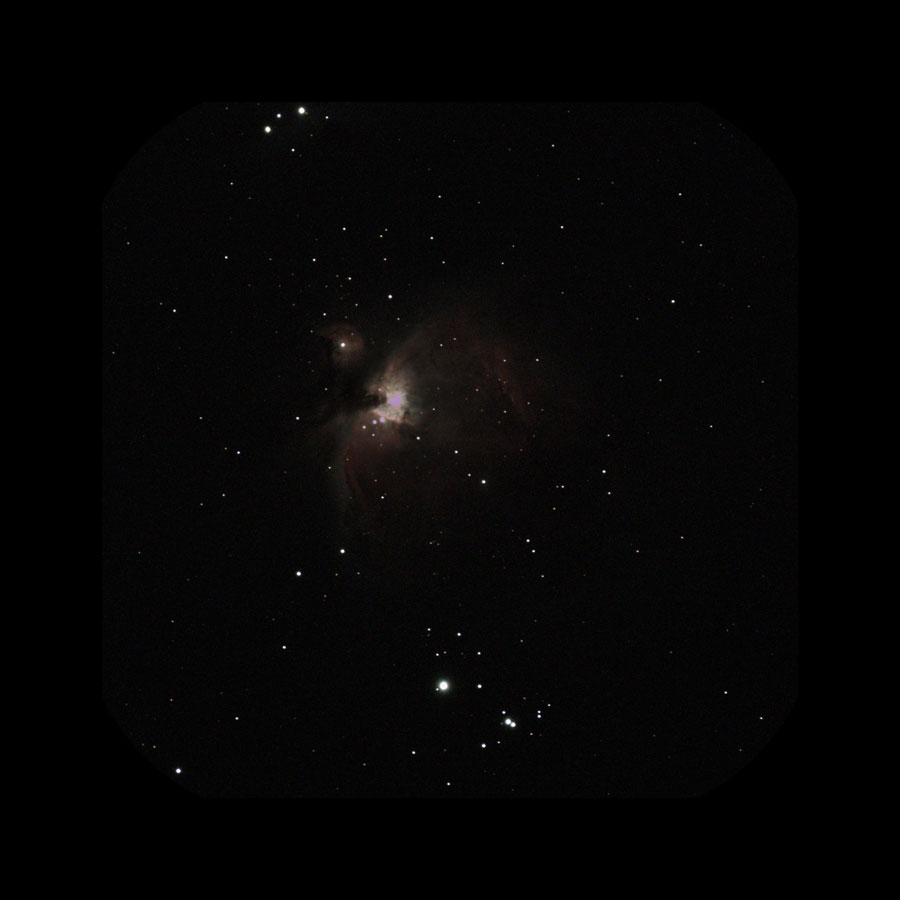 |
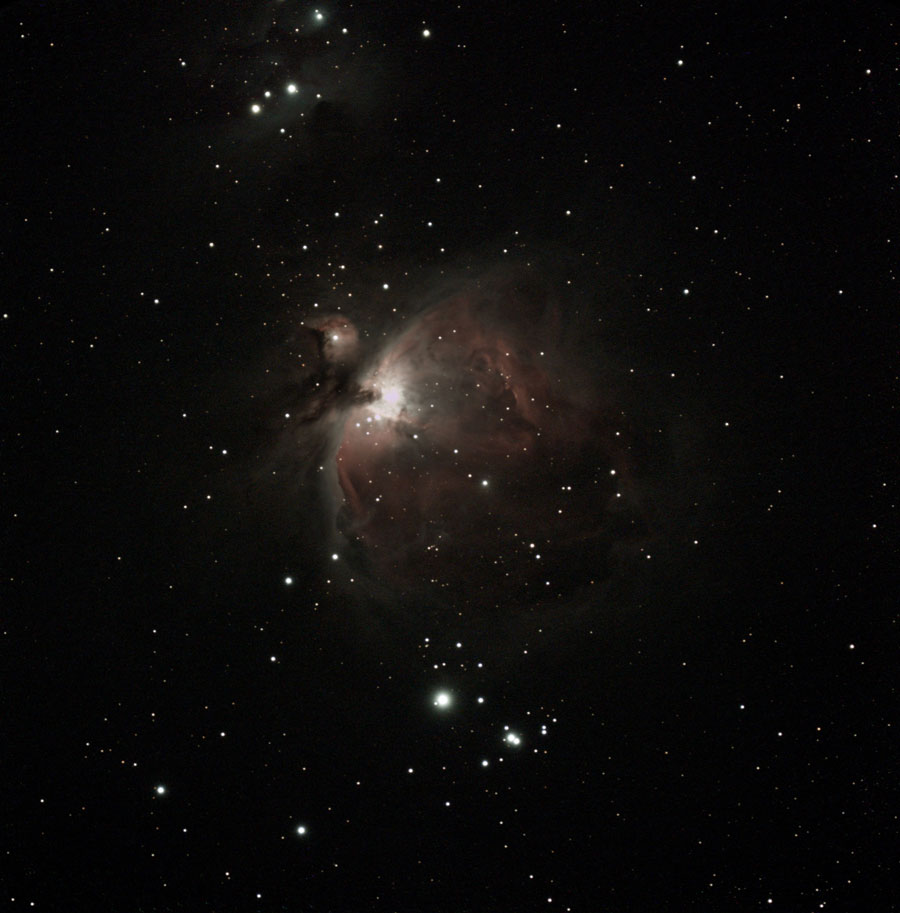 |
|
M 42/43, December 26, 2024 - 1. frame |
M 42/43, December 26, 2024 - 5 min |
|
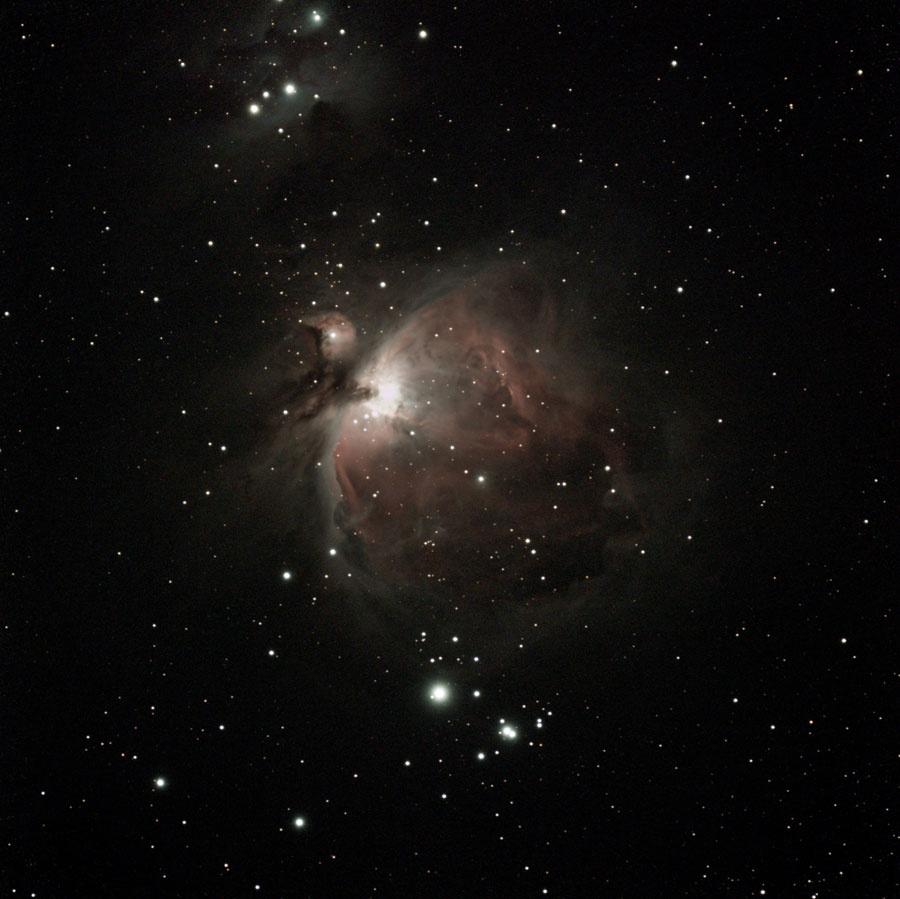 |
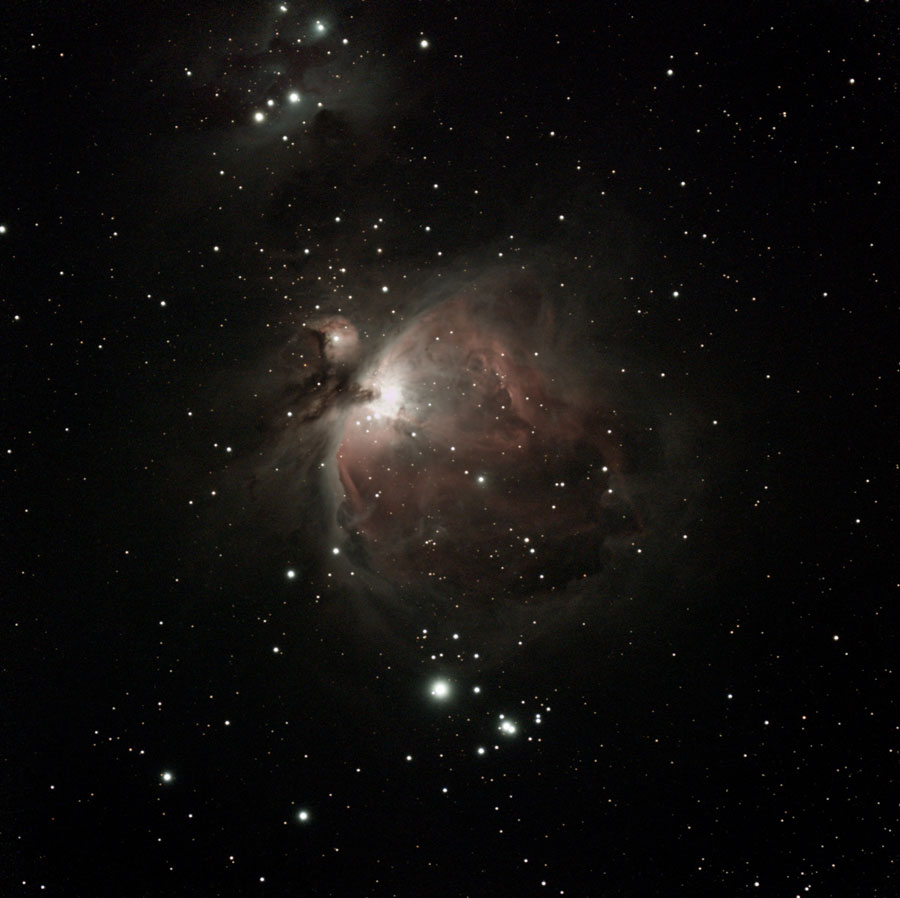 |
|
M 42/43, December 26, 2024 - 10 min |
M 42/43, December 26, 2024 - 20 min |
M 92 (Hercules) - 20 Minutes Recommended
 |
 |
|
M 92, June 4, 2024 - 1. frame (1:1 section) |
M 92, June 4, 2024- 2.5 min |
|
 |
 |
|
M 92, June 4, 2024 - 5 min |
M 92, June 4, 2024 - 10 min |
|
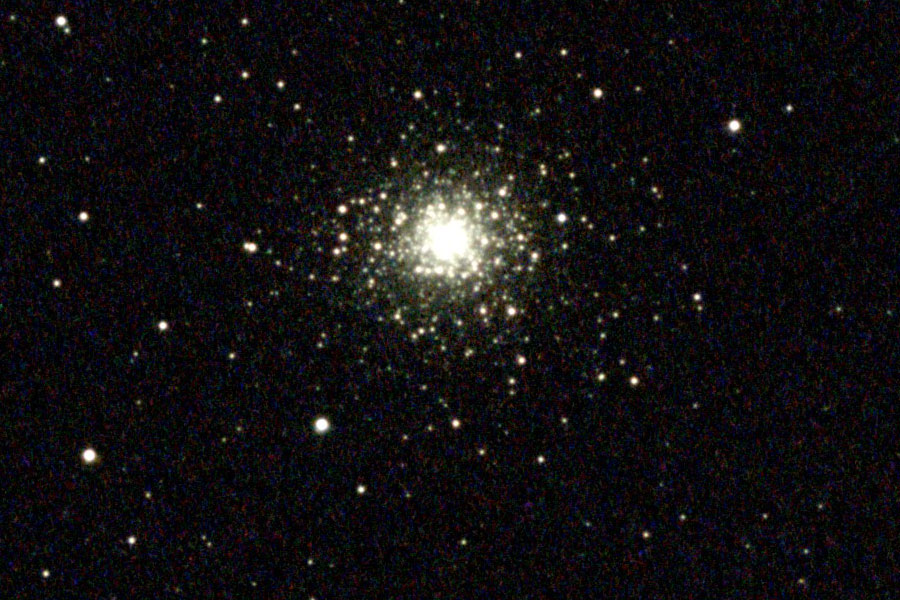 |
||
M 92, June 4, 2024 - 15 min |
|
Comment: For "observers" the photos may be OK after 5-15 minutes. For "photos" they may be acceptable after more than 15 min...
Selected DSO with up to 30 Minutes of Exposure Time
In the following, I present observations of selected DSO with up to 30 minutes exposure time and with intermediate stages. Here I tried to consider different DSO types to show the differences in exposure (up to now only galaxies). All photos are unprocessed!
M 64 (Galaxy; Coma Berenices) - 30 Minutes Recommended
Comment: For "observers" the photos may be OK after 15-20 minutes. For "photos" they may be acceptable from 30 min on.
NGC 4565 (Galaxie; Coma Berenice) - 30 Minutes Recommended
Comment: For "observers" the photos may be OK after 15-20 minutes. For "photos" they may be acceptable from 30 min on.
NGC 4631 (Galaxy; Canes Venatici) - 30 Minutes Recommended
Comment: For "observers" the photos may be OK after 15-20 minutes. For "photos" they may be acceptable from 15 min on.
Longer Exposed DSO
Here I present "long-exposure photos" of DSO, that is photos that I exposed up to an hour or more (with intermediate photos mostly at a step of 10 min). The first object, the Whirlpool Galaxy M 51, is quite bright, but benefits from a longer exposure. The second object, the Wizard Nebula NGC 7380, is very faint, practically invisible at the beginning and barely recognizable at the end of the observation. For such objects, you do not need to pay attention to short exposure times, but just take the final result (if it can be used at all...).
M 51 (Whirlpool Galaxy; Canes Venatici) - 30 Minutes Recommended
Comment: For "observers" the photos may be OK after 20-30 minutes. For "photos" they may be acceptable from 60 min on. But there is still a lot of room for improvement (= longer exposure). Even the denoised "final version" does not really satisfy.
NGC 7380 (Wizard Nebula; Cepheus)
Comment: After 50-60 minutes you might be able to make out a bit of the nebula, but even after 80 minutes you cannot see much. At least the post-processing shows that you can "get something out" with the right tools, but much longer exposure times are necessary for good results.
Preliminary Conclusions
As a first conclusion, I can say that the Vespera Pro typically requires exposure times of 20 to 30 minutes for brighter galaxies, and a lot more for less bright galaxies (and other DSO). For bright globular and open star clusters and nebulae, 10 to 15 minutes may suffice. Fainter galactic nebulae, on the other hand, require exposure times of several hours (or even sessions on different days) to obtain satisfactory results. I demonstrate this in more detail on the page Vespera Pro - Photos with Long Exposure Times.
This rules the Vespera Pro out for many of the tasks that I describe at the beginning of this page. Particularly, I do not believe that the Vespera Pro it suitbale for presenting DSO to other people "live". Moreover, even after long exposures, the photos are still very noisy, so that the Vespera Pro photos require a lot more post-processing than those of the Vespera.
See also page Vaonis Vespera - Photo Comparisons with Different Exposure Times for similar tests with the Vespera. Basically, the Vespera requires significantly shorter exposure times than the Vespera Pro, making it much more suitable for the tasks described above.
Links
- Vaonis: vaonis.com/fr (FR), vaonis.com (EN)
- See also my page offering Astronomy Links.
| 08.01.2025 |

